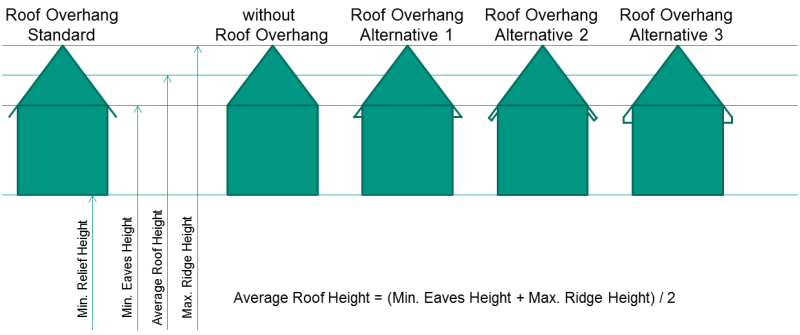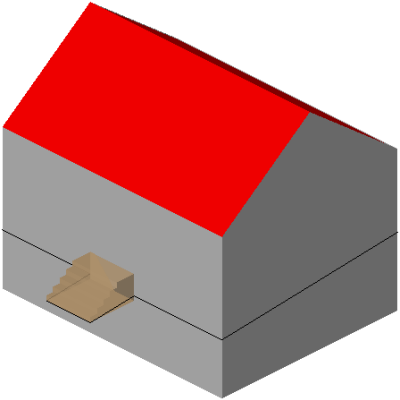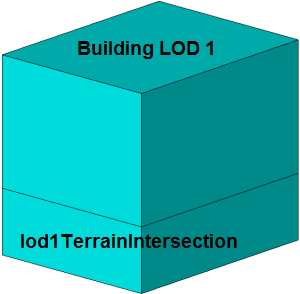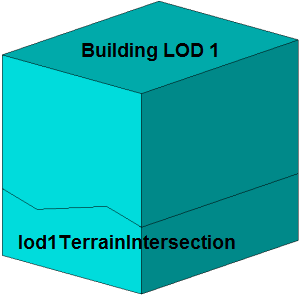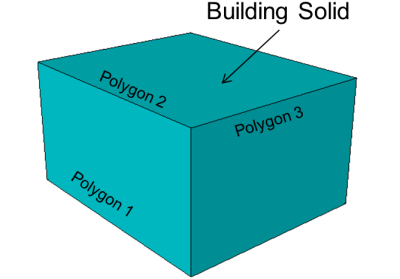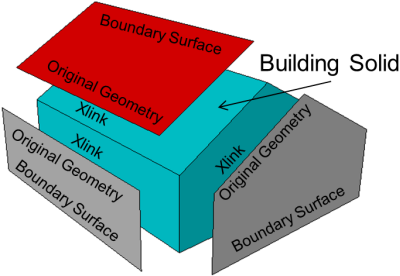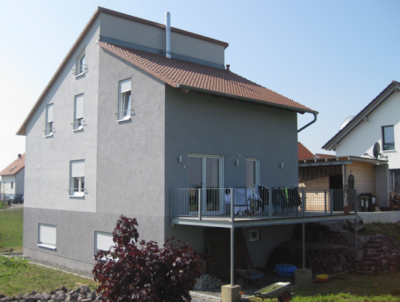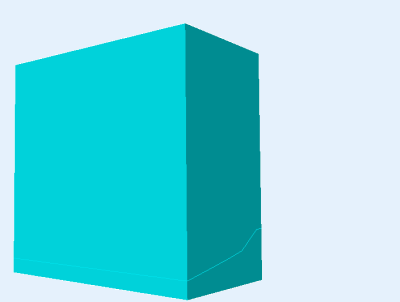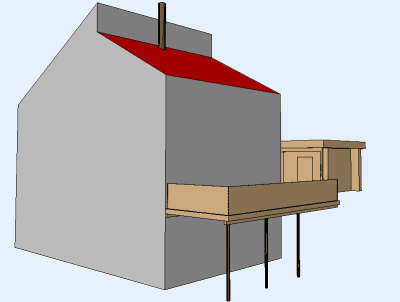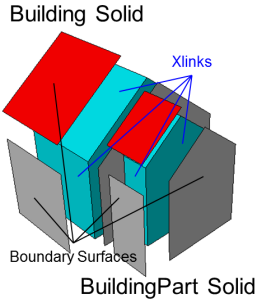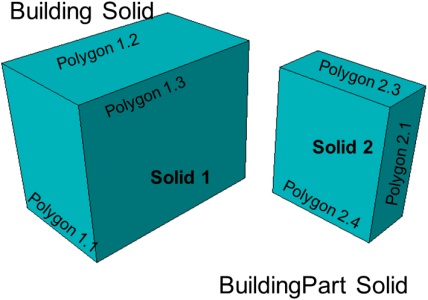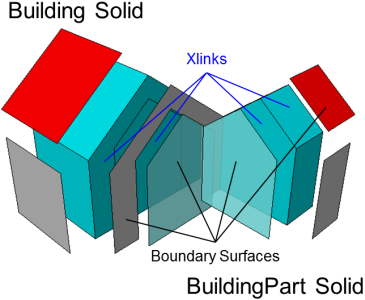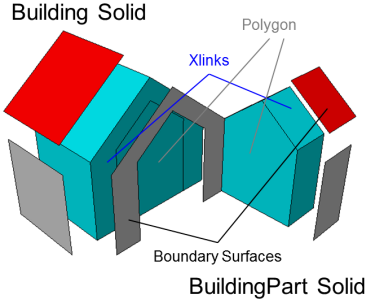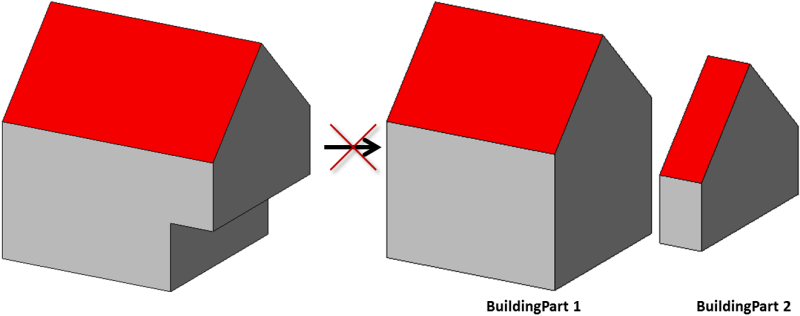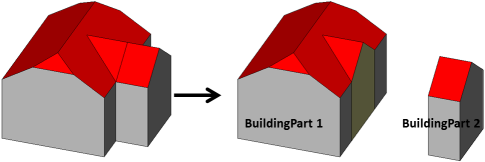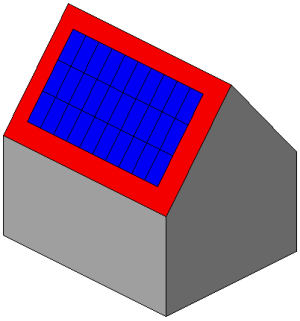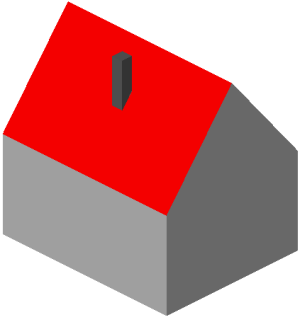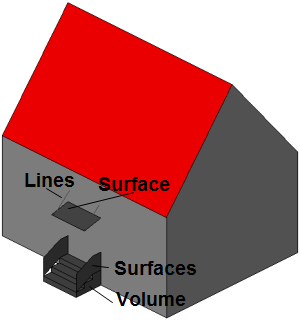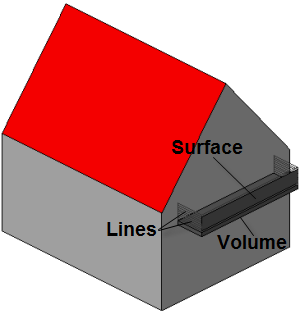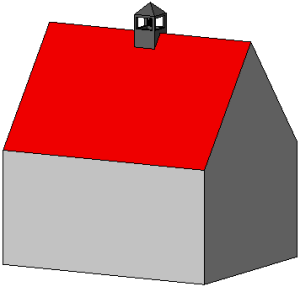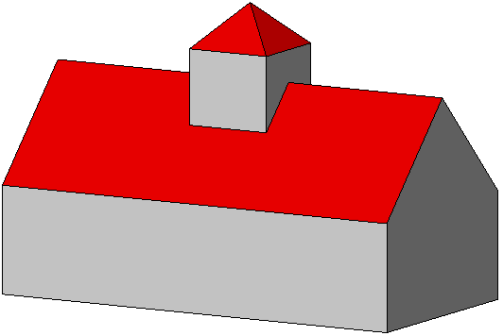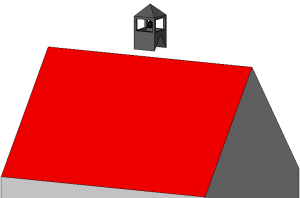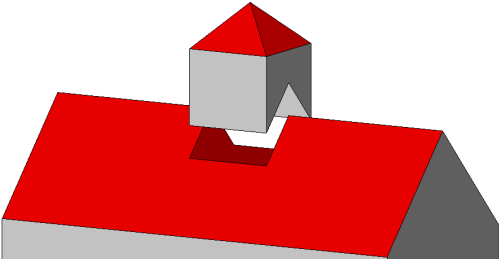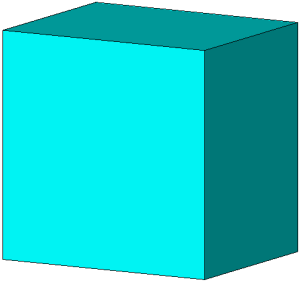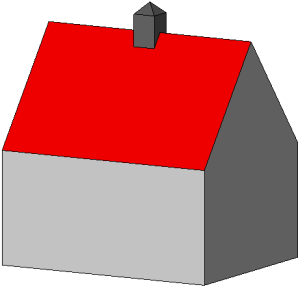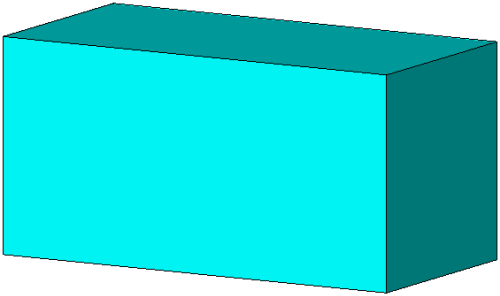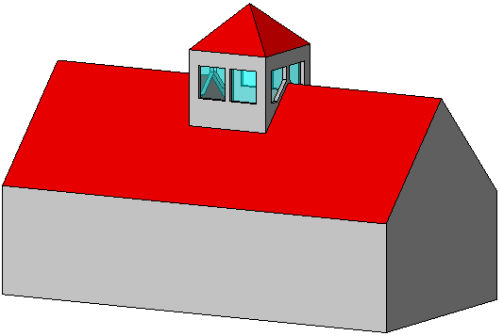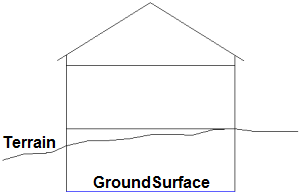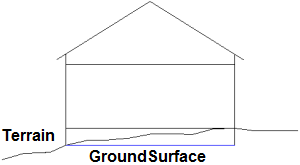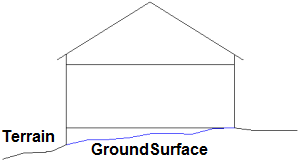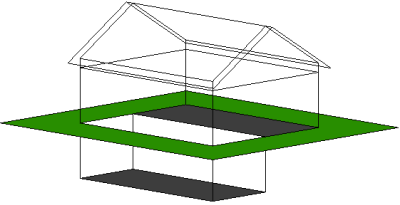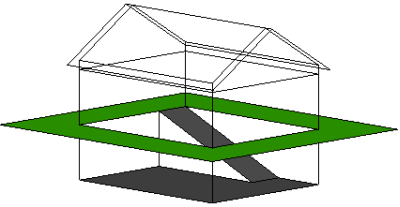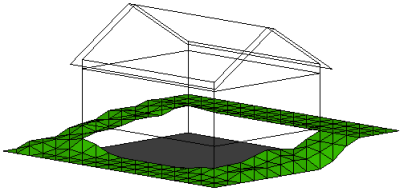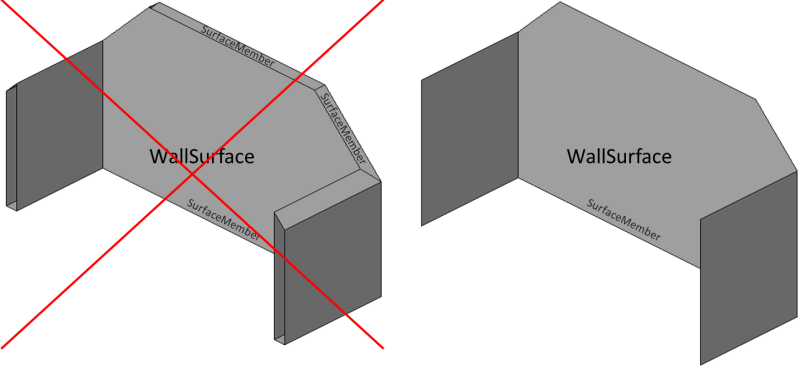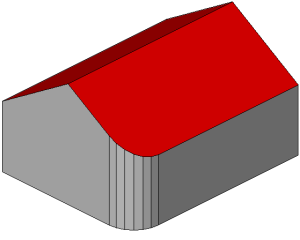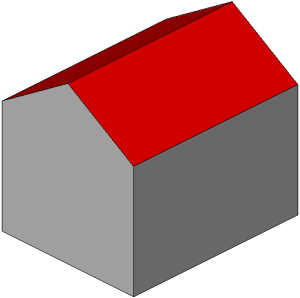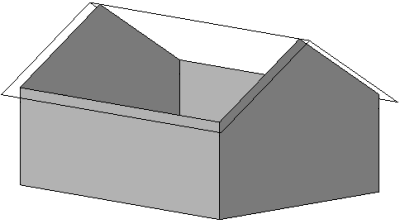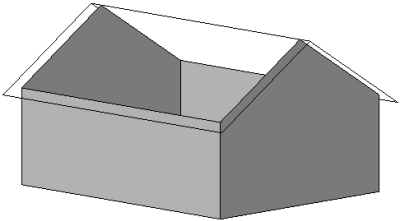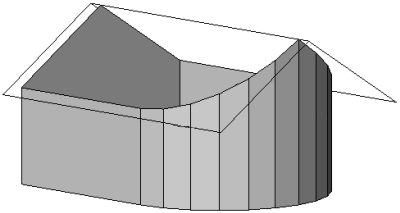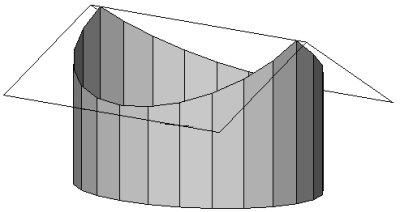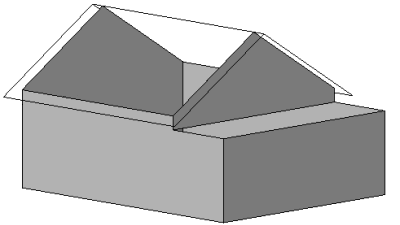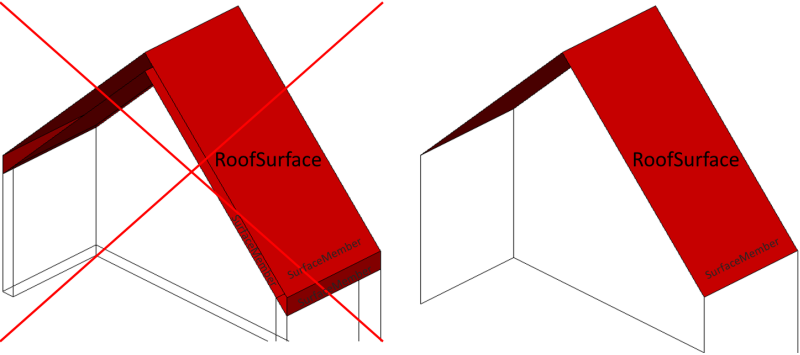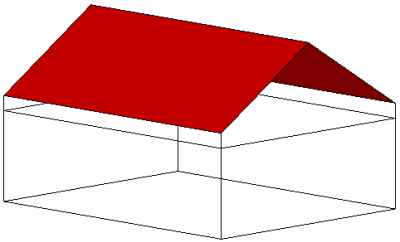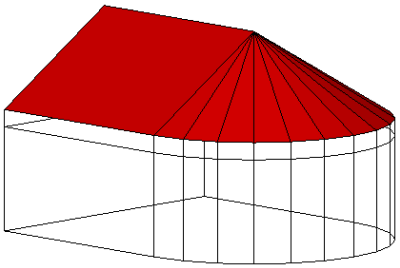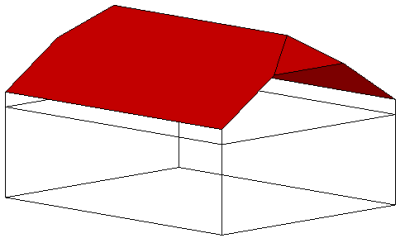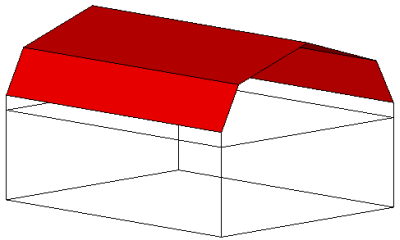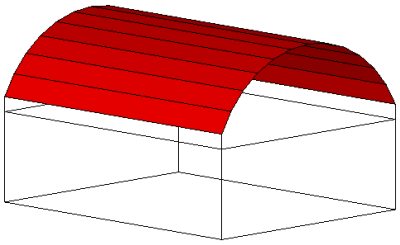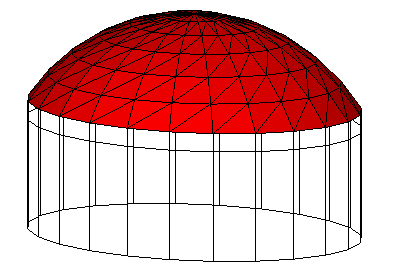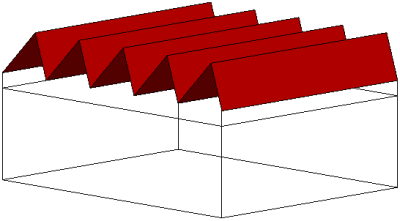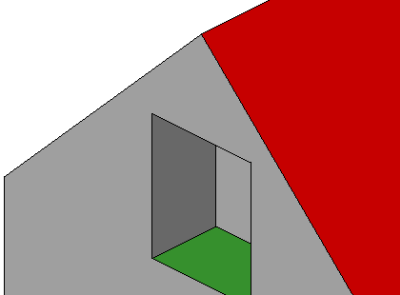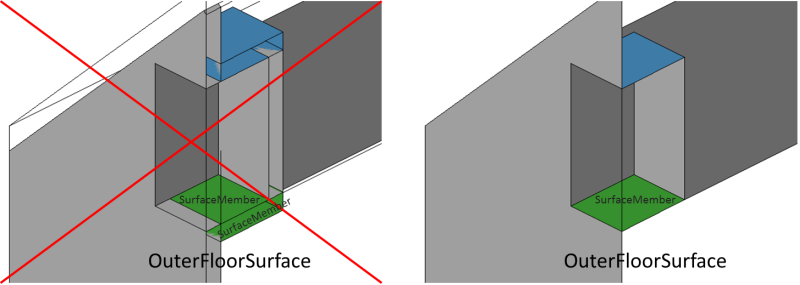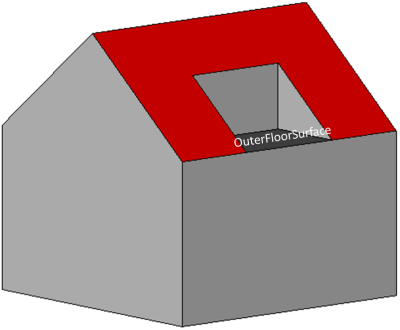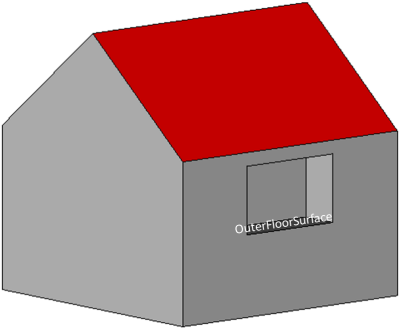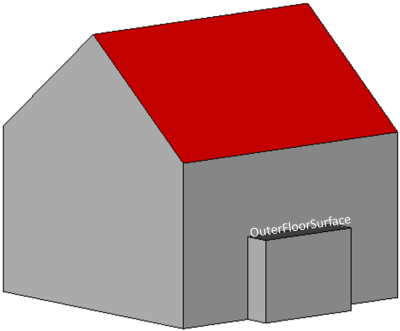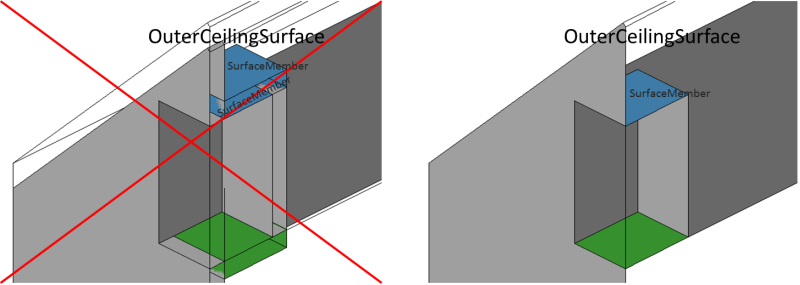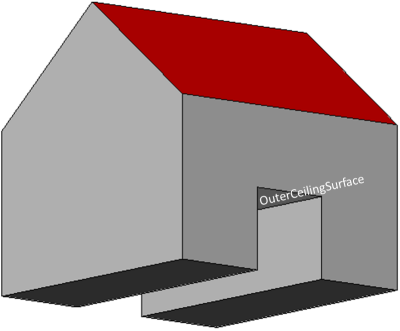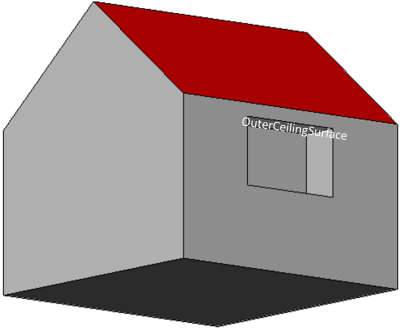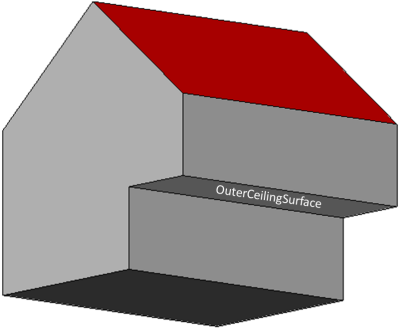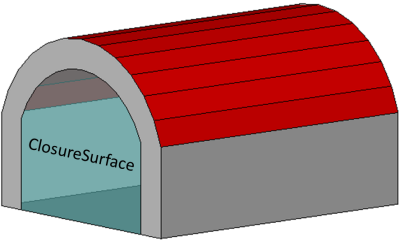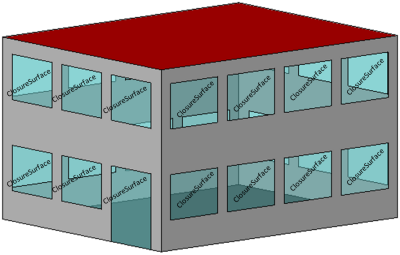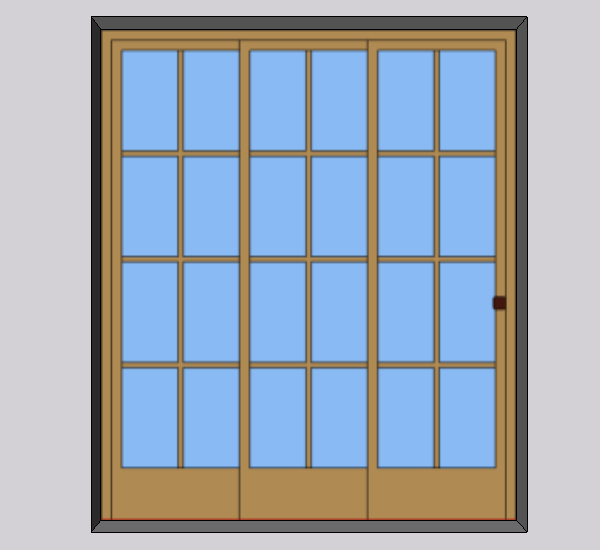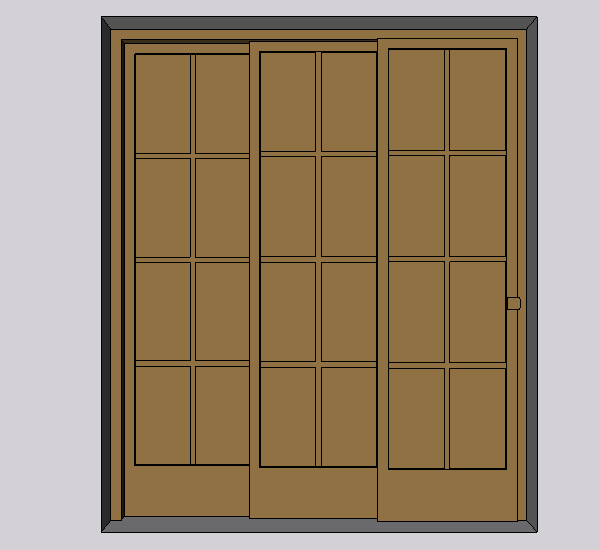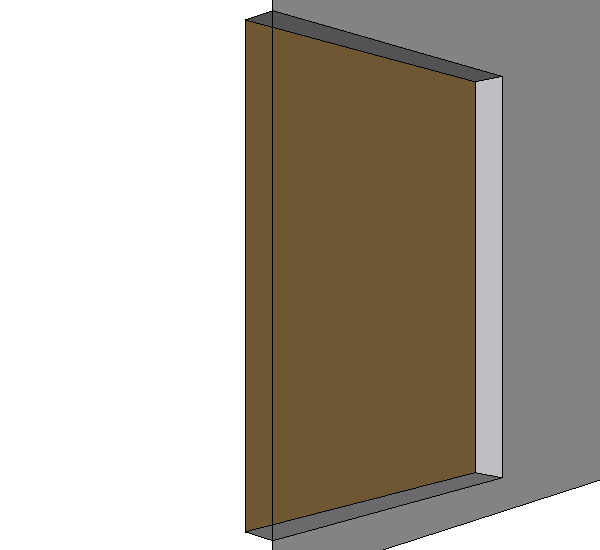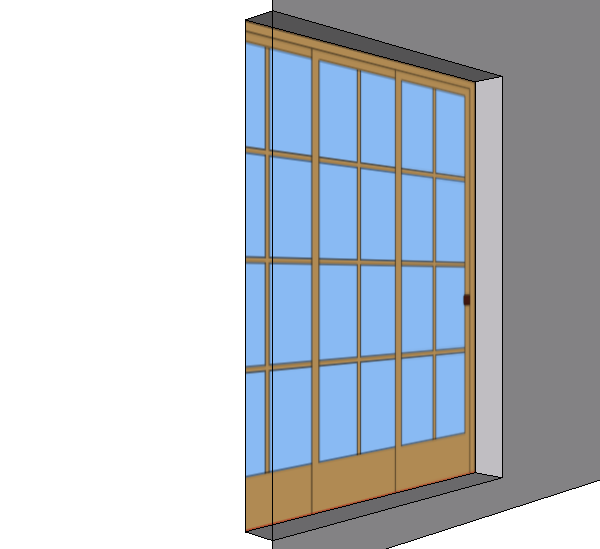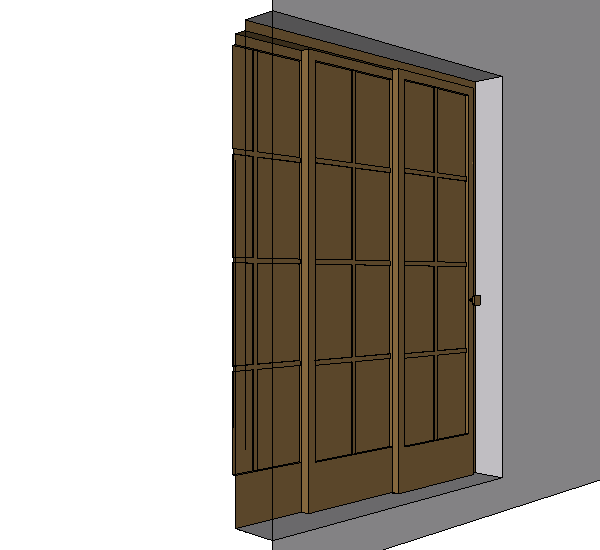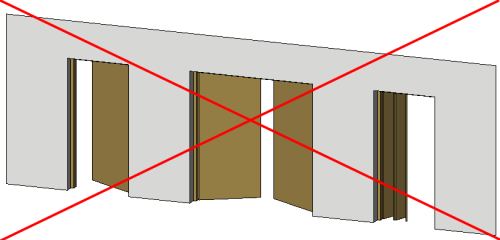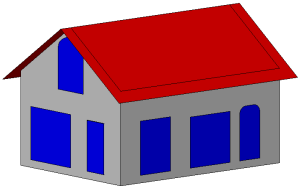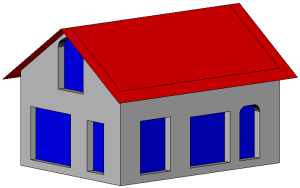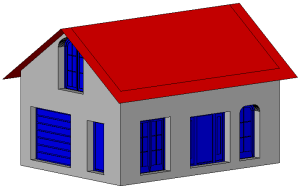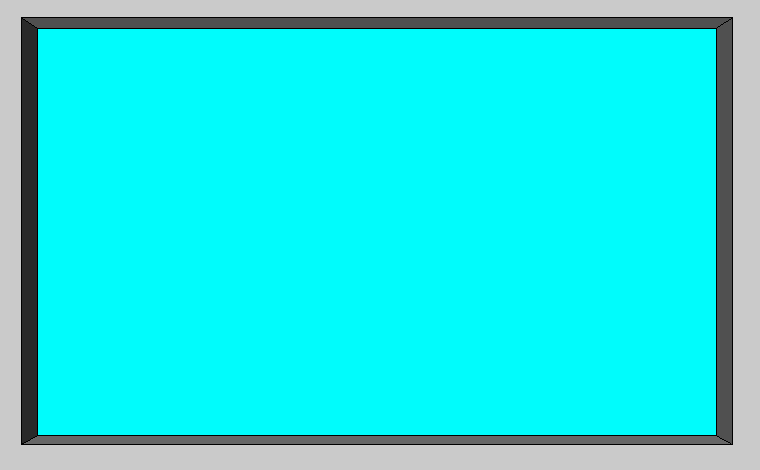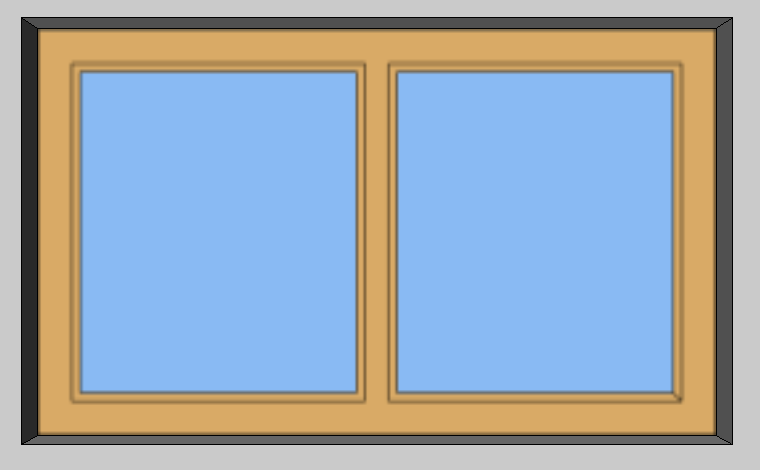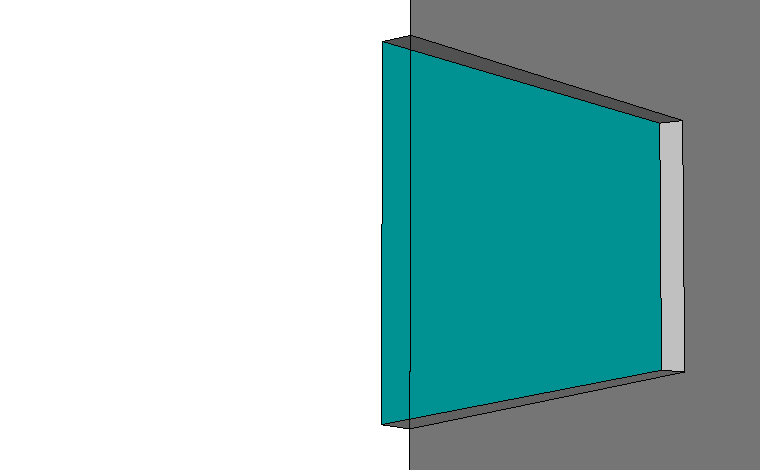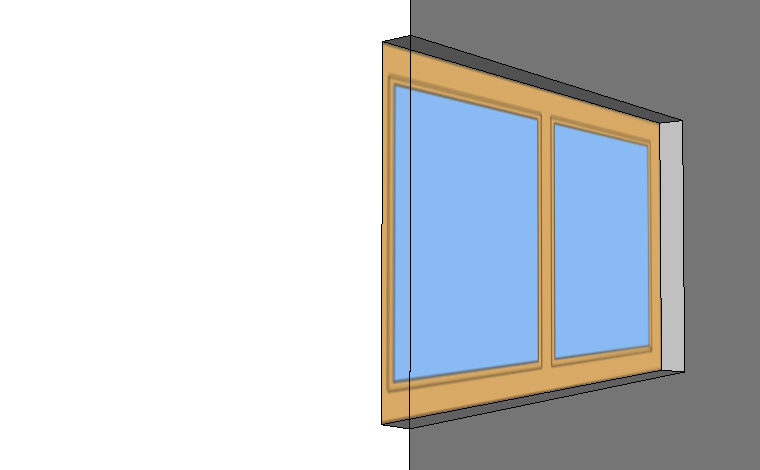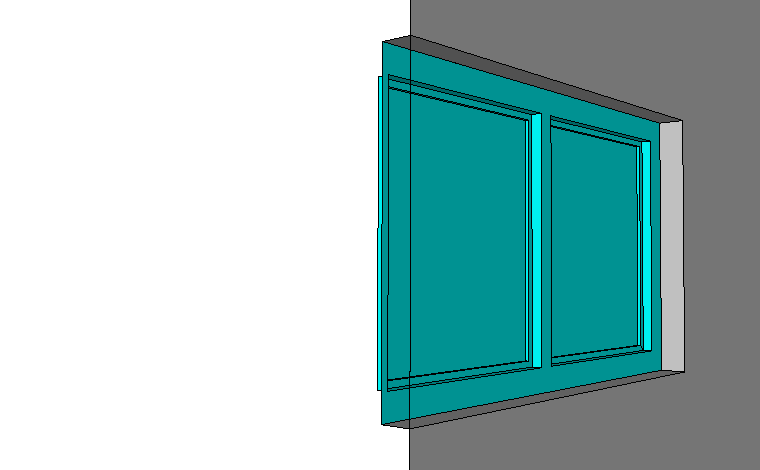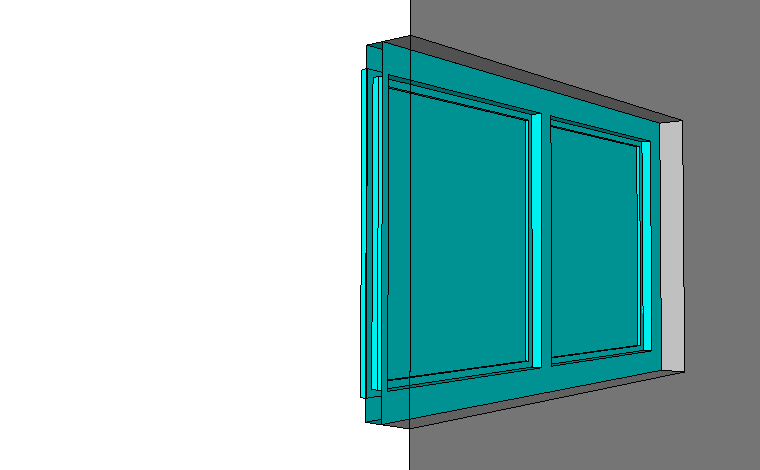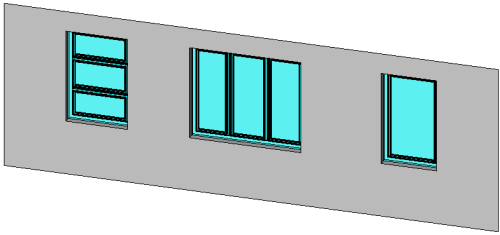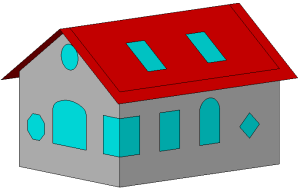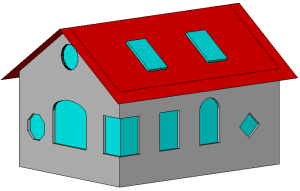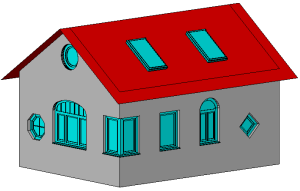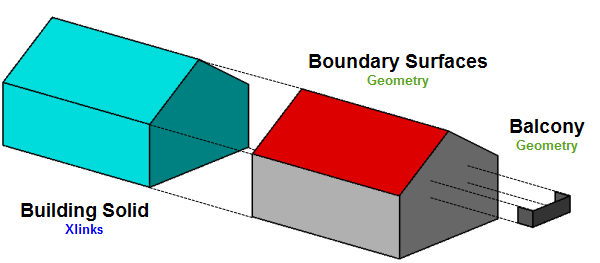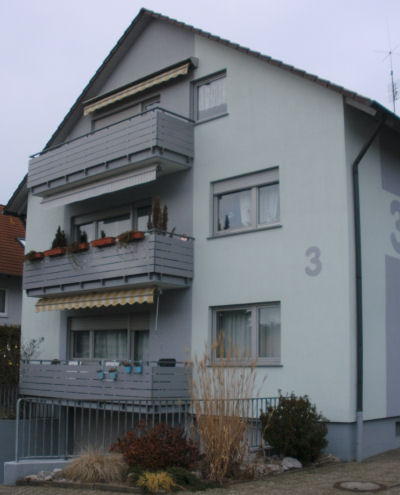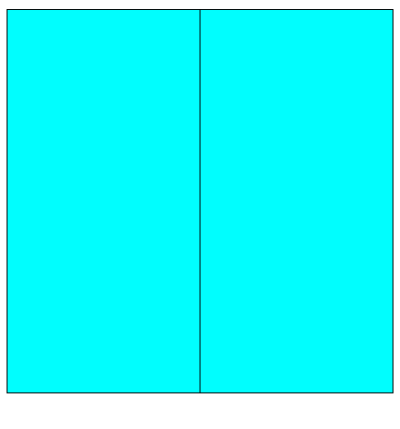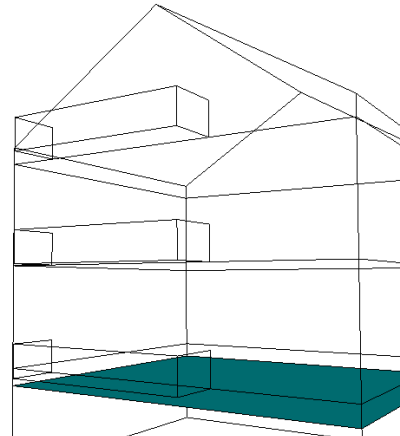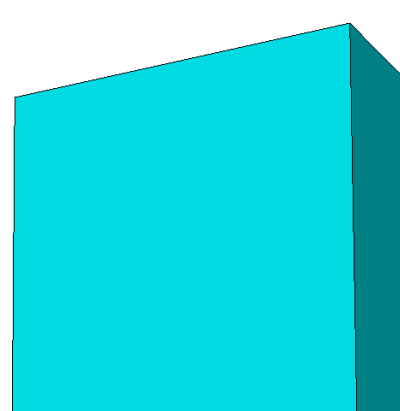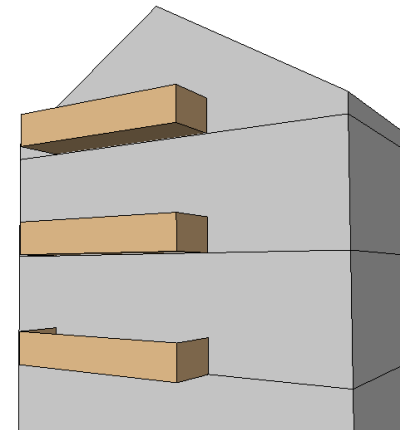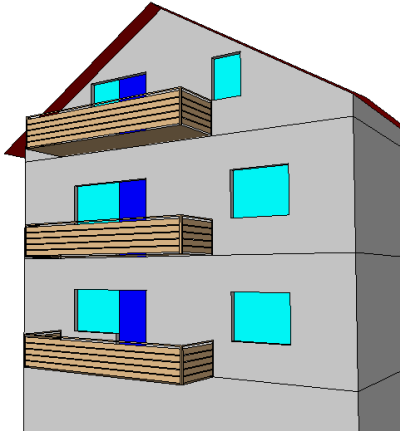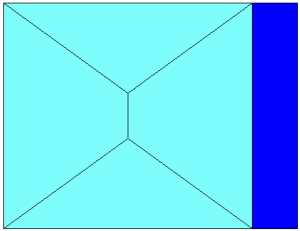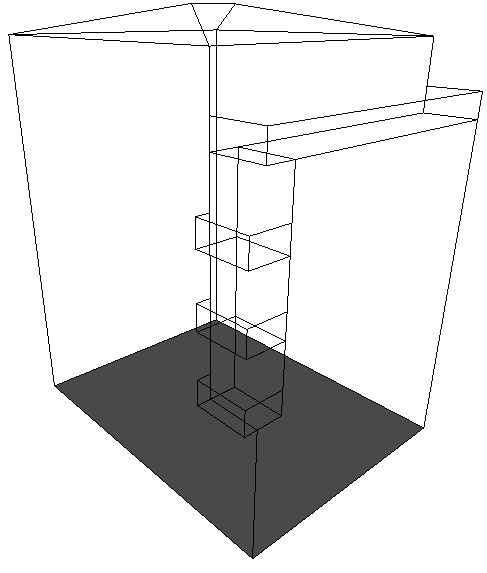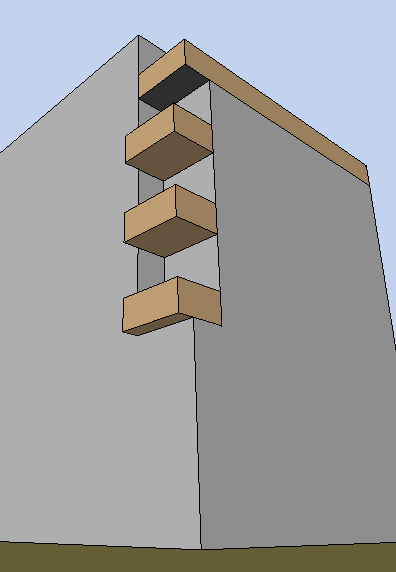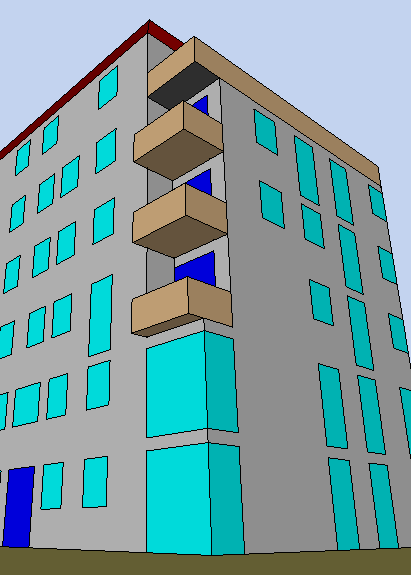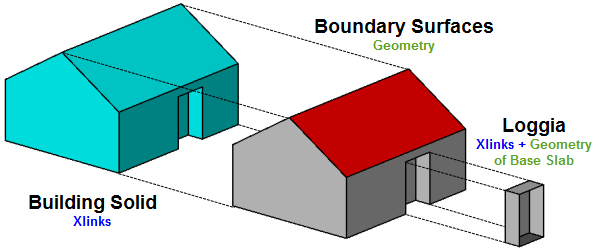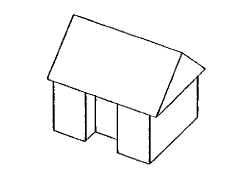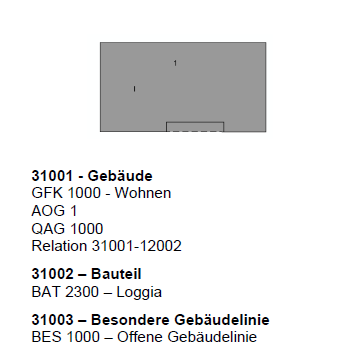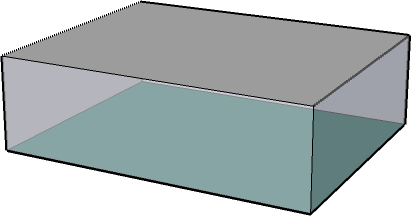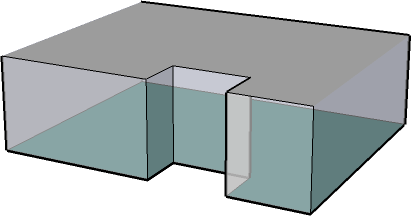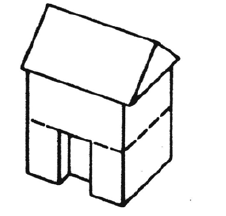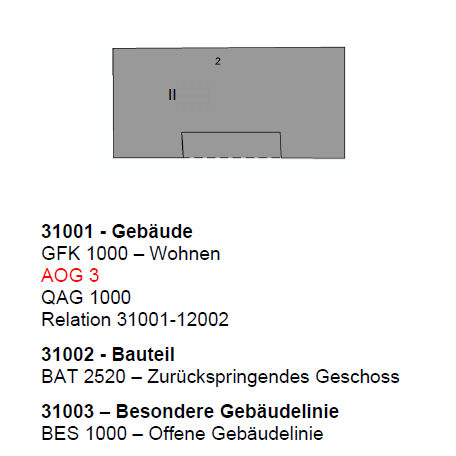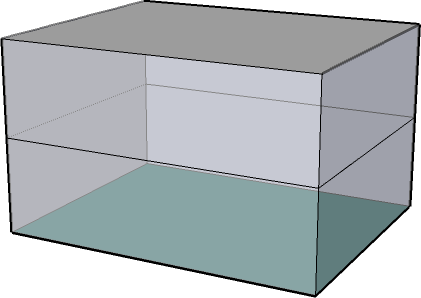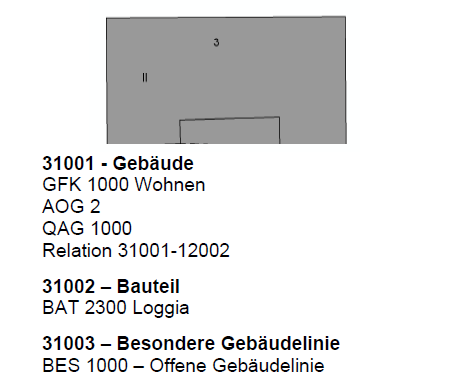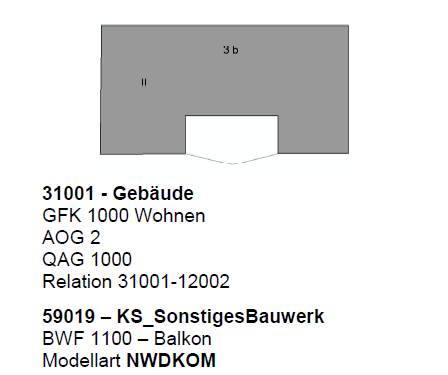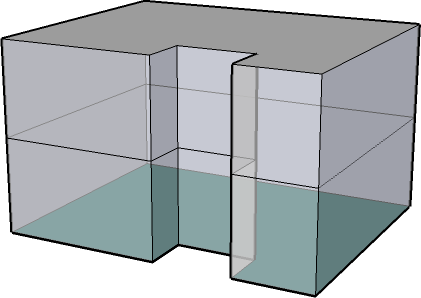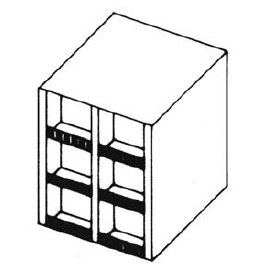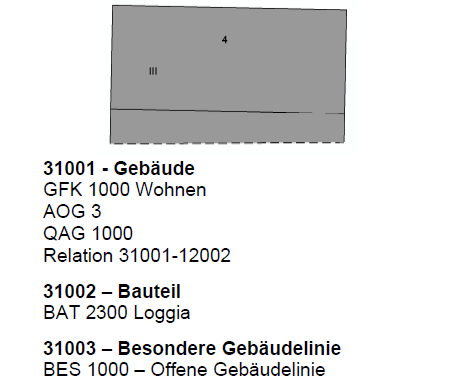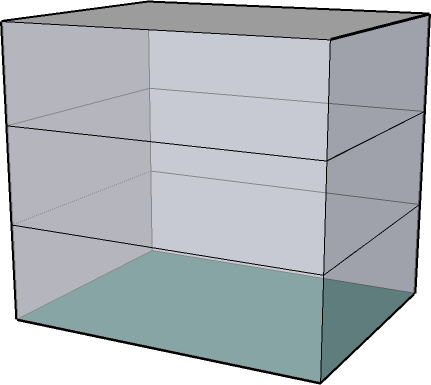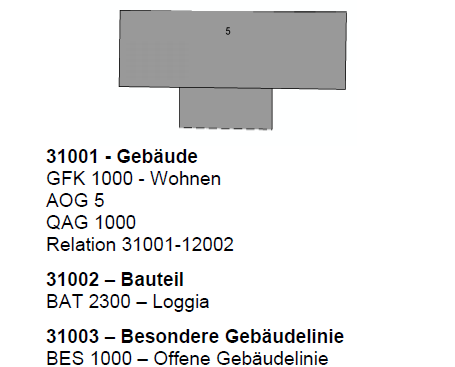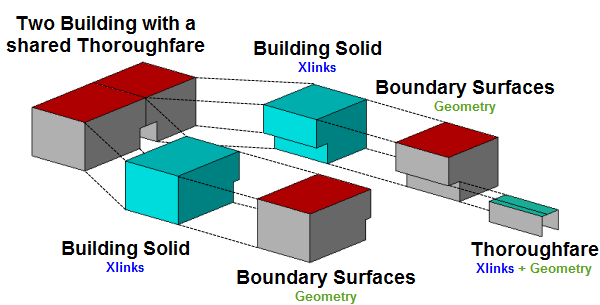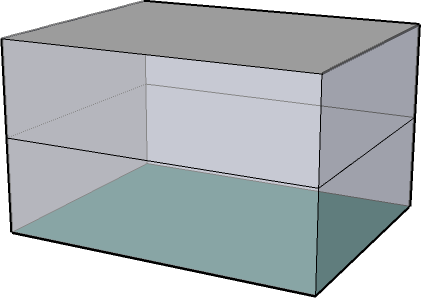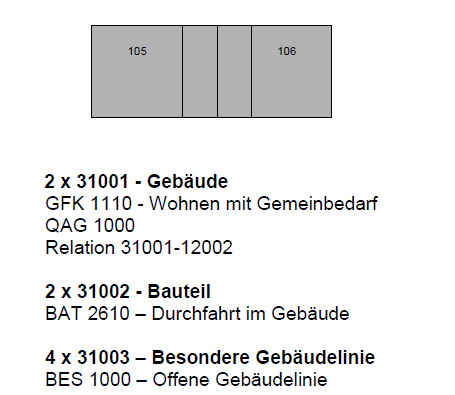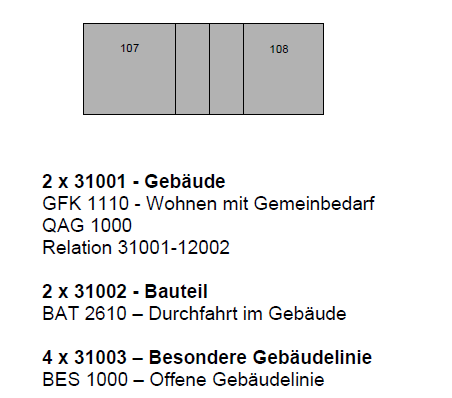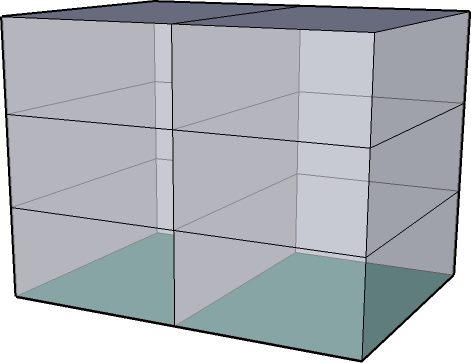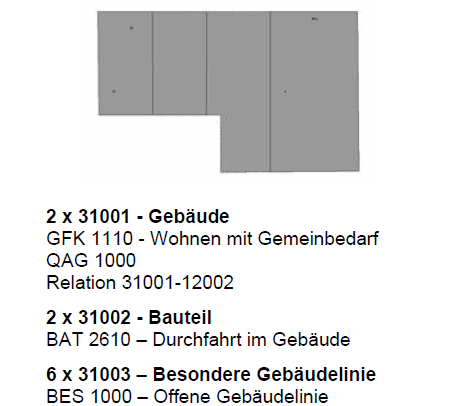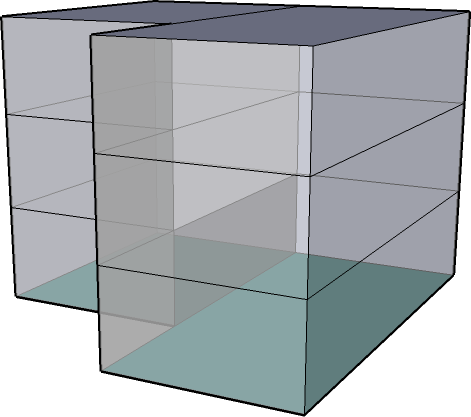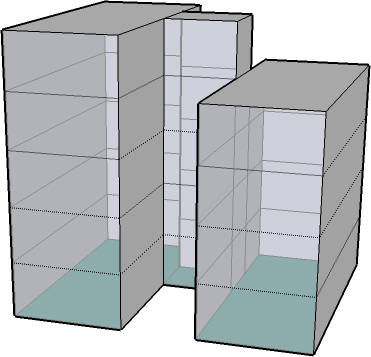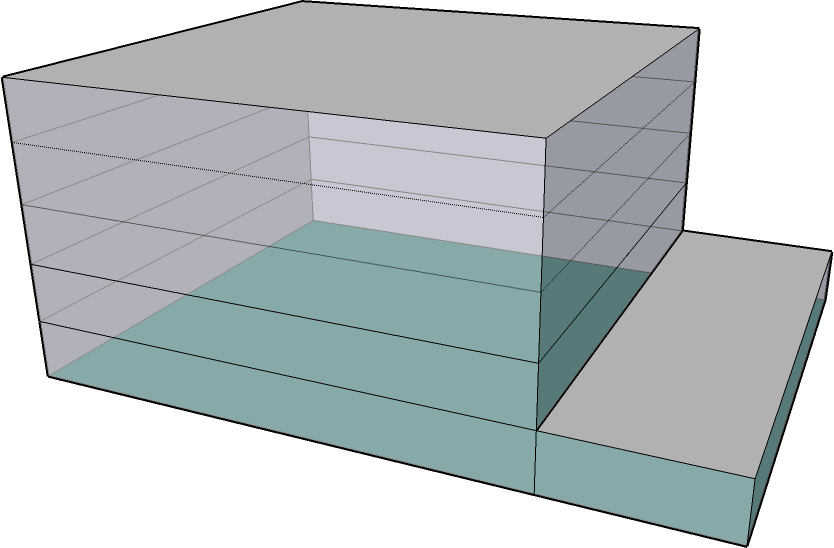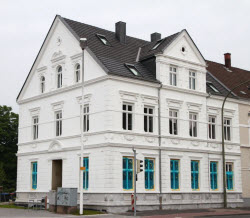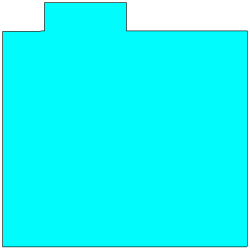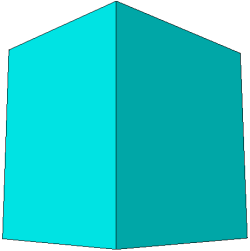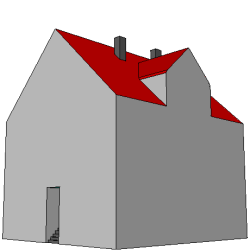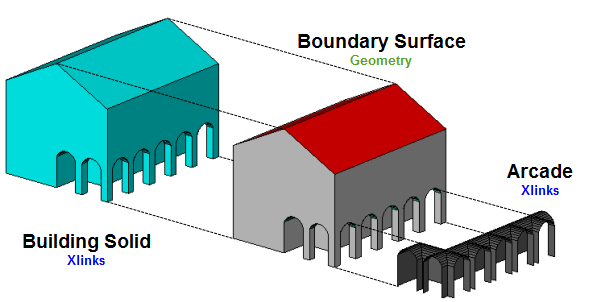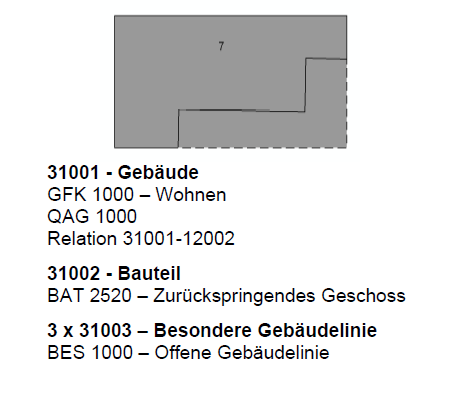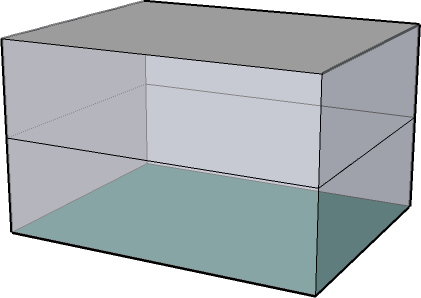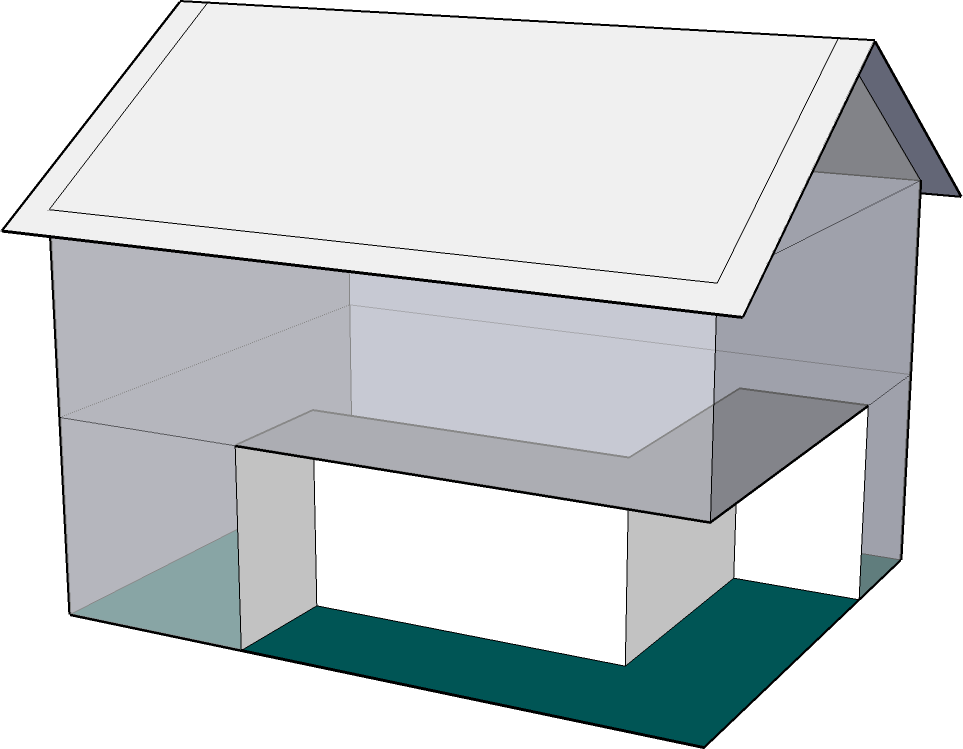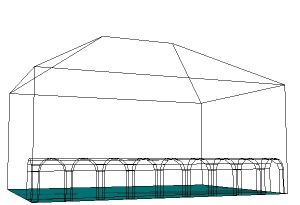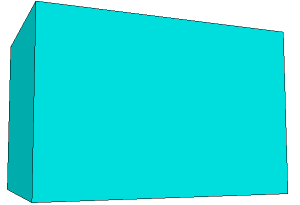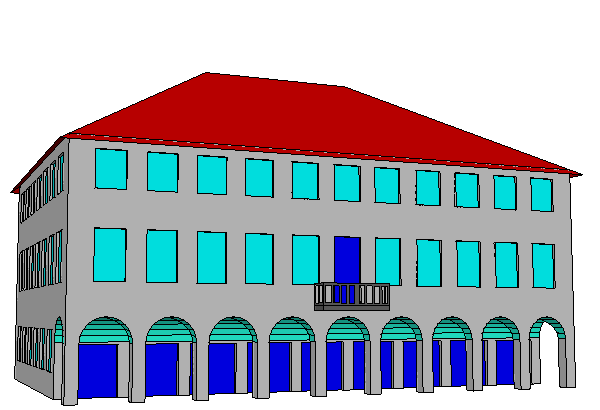Modeling Guide for 3D Objects - Part 2: Modeling of Buildings (LoD1, LoD2, LoD3)
Document History
|
Version |
Datum |
Autor/en |
Status |
Bemerkungen |
|---|---|---|---|---|
|
0.8.0 |
Januar 2012 |
nicht öffentlich |
Erste Versuche |
|
|
0.9.0 |
April 2012 |
nicht öffentlich |
Fertigstellung von Kapitel 1-4.1; 4.2 wird später bearbeitet |
|
|
1.0.0 |
Mai 2012 |
SIG 3D / AG Qualität |
öffentlich |
Erste öffentliche Version von Kapitel 1-4.1; |
|
1.1.0 |
Januar/Februar 2013 |
SIG 3D / AG Qualität |
nicht öffentlich |
Vorbereitung Version 2.0.0 mit Erweiterter Modellierung; |
|
2.0.0 |
März 2013 |
SIG 3D / AG Qualität (c) 2013 Copyright Special Interest Group 3D (SIG3D) of the Spatial Data Infrastructure Germany (GDI-DE) http://www.sig3d.org |
öffentlich |
Erste öffentliche Version mit Erweiterter Modellierung; |
|
2.0.0 EN |
November 2013 |
SIG 3D / Quality Working Group (c) 2013 Copyright Special Interest Group 3D (SIG3D) of the Spatial Data Infrastructure Germany (GDI-DE) http://www.sig3d.org /EC, KHH |
public |
First English version; |
Introduction
Scope
- The modeling recommendations are usually independent from the recording method, that means that this document is not a recording manual.
- This document describes the modeling of 3D objects on the basis of existing information. In case of lacking information, in particular in case of missing height information, objects must explicitly not be modeled. For example, if all relevant information on balconies are available, this document provides recommendations for a standardized modeling. Otherwise balconies must not be modeled.
- Recommendations are related to the Open Geospatial Consortium (OGC) standard CityGML version 1.0 and 2.0.
- This document refers to national (German) and European standards (AdV, INSPIRE) and can only be partially generalized.
- This document is restricted to the outer shell of buildings, i.e. building modeling up to LoD3
Target Group
- Modeler
- Data holder
- Developer
Prior Knowledge Required
- GML: Geography Markup Language
- CityGML: Application schema for GML for the representation, storage, and exchange of virtual 3D city and landscape models
- ALKIS: Official German Land Registry Information System
Further References
Document Conventions
- Features are written in italic characters with the corresponding name space in bold characters .
- Examples are written in fixed width.
- Online references to other internal or external pages and documents are written in blue.
- A statement which is not valid for all Levels of Detail (LoD) is noted as (LoD[1234][+]), e.g. a notation with (LoD1) is only valid for LoD1, a notation (LoD2+) is valid for all LoDs from LoD2 and above.
Definitions und Determinations
Level of Detail (Building, BuildingPart)
Definitions of SIG 3D:
- LoD0
- For every building or building part the footprint or roof outline is representad by a horizontal polygon with a well defined absolute and constant height.
- LoD1
- For every building or building part the generalized outer shell is represented by exactly one prismatic extrusion solid. Ground, floor and roof surfaces must be horizontal, lateral boundary surfaces must be vertical.
- LoD2
- For every building or building part the geometrically simplified outer shell is represented by horizontal resp. vertical outer surfaces and simplified roof shapes. All kind of surfaces ( e.g. ground surfaces, wall surfaces, roof surfaces, outer ceiling surfaces, outer floor surfaces, virtual closure surfaces ) and additional building elements ( e.g. building installations like balkonies, dormers and chimneys ) may be represented as semantic objects.
- LoD3
- For every building or building part the geometrically detailed outer shell is represented by detailed outer surfaces and detailed roof shapes. All kind of surfaces ( e.g. ground surfaces, wall surfaces, roof surfaces, outer ceiling surfaces, outer floor surfaces, virtual closure surfaces ) and additional building elements ( e.g. building installations like balkonies, dormers and chimneys ) may be more detailly represented as semantic objects. In respect to LoD2 doors and windows can be modeled as planar thematic objects.
- LoD4
- For every building or building part the geometrically detailed outer shell and interior is represented by detailed outer and inner surfaces and detailed roof shapes. All kind of surfaces ( e.g. ground surfaces, inner and outer wall surfaces, inner and outer roof surfaces, outer ceiling surfaces, outer floor surfaces, virtual closure surfaces ) and additional movable and non movable building elements ( e.g. building installations like balkonies, dormers, chimneys, interior and furniture ) may be more detailly represented as semantic objects.
Reference Coordinate System
CityGML 2.0 strongly recommends the specification of a reference coordinate system. For a meaningful use of data a valid reference coordinate system is imperative, therefore a valid reference coordinate system must be defined for each instance file:
- A reference coordinate system must be defined as three dimensional (usually position and height reference system --> see Compound Coordinate Reference System).
- A reference coordinate system should not be changed within an instance file.
- A reference coordinate system should be defined once within <gml:Envelope>.
Recommendations for Germany: ETRS89 / UTM / Reference ellipsoid GRS80 + DHHN92
CityGML Example:
<gml:boundedBy> <gml:Envelope srsDimension="3" srsName="urn:adv:crs:ETRS89_UTM32*DE_DHHN92_NH"> --> see Compound Coordinate Reference System <gml:lowerCorner srsDimension="3">458868.0 5438343.0 112.0 </gml:lowerCorner> <gml:upperCorner srsDimension="3">458892.0 5438362.0 117.0 </gml:upperCorner> </gml:Envelope> </gml:boundedBy>
ALKIS Example:
<gml:boundedBy> <gml:Envelope srsName="urn:adv:crs:ETRS89_UTM32"> <gml:pos>367456.554 5718128.391</gml:pos> <gml:pos>367505.094 5718091.143</gml:pos> </gml:Envelope> </gml:boundedBy>
see also Modeling Guide for 3D Objects - Part 1
Model Structure
The use of core:CityModel is not explicitely regulated in the specification and in the schema. The multiple use of core:CityModel is compliant to the schema and will be validated. In order to avoid conflicts while importing CityGML models, it is recommended to use exactly one instance of core:CityModel as root element.
Heights
The measuredHeight is the measured or computed difference between the lowest terrain intersection point and the highest roof point with the following properties:
- the measuredHeight is a simple attribute can not further specified and/or qualified;
- the measuredHeight is always related to the real building;
- the measuredHeight is independent of the LoD of the building;
- the computation of the measuredHeight should always base on the terrain model with the highest available resolution.
The following heights are valid for flat roofs, outshot roofs, gable roofs, hip roofs, jerkinhead roofs, mansard roofs, pyramid roof, shed roof, shells and domes:
The following heights are valid for all kind of shed roofs:
The following heights are valid for different roof overhangs:
If you need absolute heights for the noted values you must define them as generic attributes (dimensioned gen:measureAttribute):
- <gen:measureAttribute name="min height surface"><gen:value uom="#m">Value</gen:value></gen:measureAttribute>
- <gen:measureAttribute name="min height eaves"><gen:value uom="#m">Value</gen:value></gen:measureAttribute>
- <gen:measureAttribute name="max height eaves"><gen:value uom="#m">Value</gen:value></gen:measureAttribute>
- <gen:measureAttribute name="max height ridge"><gen:value uom="#m">Value</gen:value></gen:measureAttribute>
Terrain Intersection Line
In CityGML the terrain intersection line is an attribute of a building or building part. It is generated by intersection of the building or building part with the terrain and has the following properties:
- a terrain intersection line can be measured or calculated ;
- if a terrain intersection line is calculated, the terrain model with the highest resolution available should be used;
- a terrain intersection line is an attribute of the building or building part;
- outer building installations (bldg:BuildingInstallation) are taken into account from a terrain intersection line (see Figure A);
- a terrain intersection line is a result of the intersection of buildings in the respective LoD and the most accurate available terrain. In CityGML it has no relation to the terrain used in a visualization and its resolution and accuracy.
- a terrain intersection line may consist of several independent parts;
- a terrain intersection line need not be closed;
- a terrain intersection line which does not exist in reality will not be taken into account (e.g. in the case of building parts ).
|
Figure A |
Figure B |
Figure C |
Figure D |
Cantilevered Building Elements
Cantilevered or projecting building elements are defined as parts of roofs, walls etc, which should not be considered in the volume calculation of the building. Cantilevered or projecting building elements are modeled as follows:
- as surface element(s) always separated from the volume-forming building element (see Figure A)
- always as a surface element, if the thickness of the building element is less than 0.5 m (see Figure B)
- always as a solid element, if the thickness of the building element is greater than 0.5 m (see Figure B)
- in LoD2 always as a surface element, if the thickness of the building element is less than 0.5 m
- in LoD2 always as a solid element, if the thickness of the building element is greater than 0.5 m
- in LoD3 always in the best accuracy based on available information.
|
Figure A |
|
Figure B |
Closed Coverage Type
Buildings as parts of closed coverage type (applies to semi-detached and terrace houses also) can be modeled as follows:
- Buildings that are separated within the land register should be modeled as separate buildings.
 | 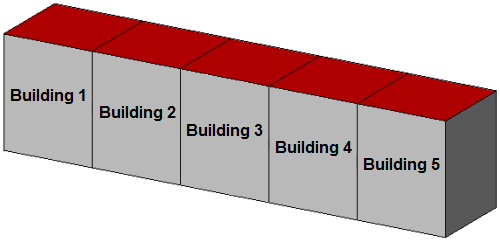 |
| Separate buildings of closed coverage type | Terrace houses as separate buildings |
- Buildings that are united within the land register should be modeled as one single building which can be subdivided into building parts (e.g. row of buildings, semi-detached or terrace houses).
 | 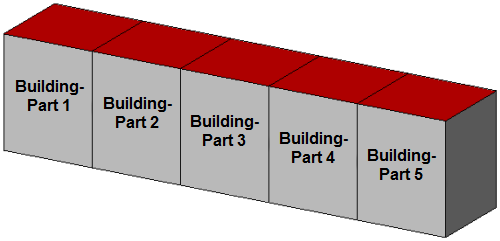 |
| Terrace houses as one single building | Terrace houses as building parts |
- Buildings without any land register information and for which the building detection provides no usable structures (e.g. based on flights) should be modeled as one single building.

Terrace houses as one single building
The modeling of boundary surfaces between buildings must satisfy the following geometric resp. semantic conditions:
- Common boundary surfaces may only be referenced within a building via Xlink (building-building part resp. building part - building part).
Addresses
- The CityGML specification allows to assign an address both to a building (bldg:Building, bldg:BuildingPart) as well to a door (bldg:Door). It is recommended always to assign an address to a building (in any LoD) because doors are not available in LoD1 and LoD2.
- It is recommended to use the complete postal address.
- Multiple addresses can be assigned to one building.
- Umlauts are allowed in addresses (z.B. Würzburg☺, Wuerzburg☺, Würzburg and Wuerzburg mixed ☹).
General example:
Street: Hermann-von-Helmholtz-Platz Number: 1 Zip Code: 76344 City: Eggenstein-Leopoldshafen
CityGML example:
<core:Address>
<core:xalAddress>
<xAL:AddressDetails>
<xAL:Locality Type="Town">
<xAL:LocalityName>Eggenstein-Leopoldshafen</xAL:LocalityName>
<xAL:Thoroughfare Type="Street">
<xAL:ThoroughfareNumber>1</xAL:ThoroughfareNumber>
<xAL:ThoroughfareName>Hermann-von-Helmholtz-Platz</xAL:ThoroughfareName>
</xAL:Thoroughfare>
<xAL:PostalCode>
<xAL:PostalCodeNumber>76344</xAL:PostalCodeNumber>
</xAL:PostalCode>
</xAL:Locality>
</xAL:AddressDetails>
</core:xalAddress>
</core:Address>
Codelists
Codelists for the CityGML 2.0 standard are available at "http://www.sig3d.org/codelists/standard".
The recommendations for codelists in this modeling guide refer to the proposal of the SIG3D. These codelists are availabe (in German only) at "http://www.sig3d.org/codelists/Handbuch-SIG3D" and relate to ALKIS.
This modeling guide refers to the following codelists:
- Building resp. building part (bldg:Building / bldg:BuildingPart)
- class http://www.sig3d.org/codelists/Handbuch-SIG3D/building/2.0/CL-V1.0/_AbstractBuilding_class.xml
- function http://www.sig3d.org/codelists/Handbuch-SIG3D/building/2.0/CL-V1.0/_AbstractBuilding_function.xml
- usage http://www.sig3d.org/codelists/Handbuch-SIG3D/building/2.0/CL-V1.0/_AbstractBuilding_usage.xml
- roofType http://www.sig3d.org/codelists/Handbuch-SIG3D/building/2.0/CL-V1.0/_AbstractBuilding_roofType.xml
- Building installations (bldg:BuildingInstallation)
Generic Attributes
Generic (user defined) attributes may be used to represent attributes which are not covered explicitly by the CityGML schema. Generic attributes must be used with care; they shall only be used if there is no appropriate attribute available in the overall CityGML schema. Otherwise, problems concerning semantic interoperability may arise. Interoperability of generic attributes is reduced to attribute values which can only be interpreted semantically by additional information. The following attribute types are defined:
- stringAttribute - for arbitrary strings
- intAttribute - for dimensionless integer numbers
- doubleAttribute - for dimensionless floating point numbers
- dateAttribute - for dates with integer-valued year, month and day representation in the format YYYY-MM-DD (e.g. 2013-03-08)
- uriAttribute - represents a Uniform Resource Identifier Reference (URI) (e.g. a link to a document or a web site)
- measureAttribute - for dimensioned values (CityGML 2.0)
Attributes can be combined in CityGML 2.0 by generic attribute sets genericAttributeSet with an optional codeSpace. If the codeSpace attribute is present, then its value should identify an authority for the set, such as the organisation or community who defined its content. The generic attribute set may contain arbitrary generic attributes.
CityGML Examples
<gen:stringAttribute name="construction"><gen:value>concrete</gen:value></gen:stringAttribute> <gen:intAttribute name="entries"><gen:value>3</gen:value></gen:intAttribute> <gen:doubleAttribute name="floor area ratio FAR"><gen:value>0.33</gen:value></gen:doubleAttribute> <gen:dateAttribute name="approval date"><gen:value>2012-03-09</gen:value></gen:dateAttribute> <gen:uriAttribute name="website "><gen:value>http://www.sig3d.org</gen:value></gen:uriAttribute> <gen:measureAttribute name="building width"><gen:value uom="#m">10.00</gen:value>/gen:measureAttribute>
<gen:genericAttributeSet name="Base Quantities"> <gen:measureAttribute name="Height"><gen:value uom="#m">9.00</gen:value></gen:measureAttribute> <gen:measureAttribute name="Area"><gen:value uom="#m2">80.00</gen:value></gen:measureAttribute> <gen:measureAttribute name="Volume"><gen:value uom="#m3">720.00</gen:value></gen:measureAttribute> </gen:genericAttributeSet>
Geometry
There is no GML Profile for CityGML. This means that CityGML instance files will validate with every GML geometry. The specification restricts the usage of GML geometry classes (CityGML 2.0 Annex D "Overview of employed GML3 geometry classes). CityGML references to the following geometry classes (CityGML 2.0 Annex D):
|
Abstract Classes |
Instantiated Classes |
Further Limitations |
|
gml:_Solid |
gml:Solid |
only gml:OrientableSurface, gml:Polygon, gml:CompositeSurface, tex:TexturedSurface (obsolete) |
|
gml:CompositeSolid |
no restriction |
|
|
gml:_Surface |
gml:Polygon |
only gml:LinearRing and gml:Ring exclusively with gml:LineString or gml:CompositeCurve |
|
gml:OrientableSurface |
no restriction |
|
|
tex:TextureSurface |
obsolete |
|
|
gml:CompositeSurface |
only gml:OrientableSurface, gml:Polygon, gml:CompositeSurface tex:TexturedSurface (veraltet) |
|
|
gml:TriangulatedSurface |
no restriction |
|
|
gml:Tin |
no restriction |
|
|
gml:_Curve |
gml:LineString |
no restriction |
|
gml:CompositeCurve |
gml:LineString and gml:CompositeCurve only |
|
|
gml:_GeometricPrimitive |
gml:Point |
no restriction |
|
gml:_Coverage |
gml:RectifiedGridCoverage |
no restriction |
|
gml:_AbstractGeometricAggregate |
gml:MultiSolid |
no restriction |
|
gml:MultiSurface |
only gml:OrientableSurface, gml:Polygon, gml:CompositeSurface, tex:TexturedSurface (obsolete) |
|
|
gml:MultiCurve |
only gml:LineString and gml:CompositeCurve |
|
|
gml:MultiPoint |
no restriction |
|
|
gml:GeometricComplex |
restricted to connected linear networks |
|
|
gml:MultiGeometry |
restrictrions see allowed geometry types |
In order to keep the instance files small and to ensure an optimal editability of models, maximum flat polygons should be used, if appropriate with holes (inner rings).
File Name
It is recommended to use *.gml as file extension to distinguish CityGML files from other XML files.
Modeling
Base Modeling
The base modeling includes the modeling of the building resp. building part itself in LoD1, with appropriate boundary surfaces in LoD2 and LoD3 and with windows and doors in LoD3. In addition, the basic modeling covers the general use of building installations.
Building (bldg:Building)
Definition
SIG3D: A free-standing self-supporting construction that is roofed, usually walled, and can be entered by humans and is normally designed to stand permanently in one place. It is intended for human occupancy (for example: a place of work or recreation), habitation and/or shelter of humans, animals or things.
ISO: Provision of shelter for its occupants or contents as one of its main purposes; usually partially or totally enclosed and designed to stand permanently in one place
CityGML Feature
bldg:Building
Geometry
gml:Solid see Modeling Guide - Part 1
It is recommended to use gml:Solid depending on the LoD in the following way :
- In LoD1 a solid directly contains the bounding geometry (Figure A)
- In LoD2 and LoD3 a solid contains external references (Xlinks) to the bounding geometry (wall surfaces, roof surfaces, ground surfaces, outer ceiling surfaces, outer bottom surfaces and closure surfaces as well as doors and windows) (Figure B) ( see also conformance requirement no. 4 in chapter 10.3.9 of the CityGML V2.0 specification )
|
Figure A |
Figure B |
gml:MultiSurface (not recommented)
gml:MultiCurve (not recommented)
Attributes
- gml:id (mandatory)
- from GML version 3.2 onwards an id is mandatory
- gml:name (recommended, if available in the underlying land register)
- 'name' is the proper name or the name of the building.
- bldg:class (LoD1, LoD2, LoD3)
- The attribute bldg:class allows an unspecified classification of the building; no suggestion from the SIG3D;
- bldg:function (LoD1, LoD2, LoD3) (recommended)
- The 'function' of a building is the predominantly functional significance of the building at the date of data collection ( principle of dominance ); see also in the SIG3D code lists.
- bldg:usage (LoD1, LoD2, LoD3) (conditionally recommended)
- The 'usage' of a building describes the use of the building and contains the respective percentage usage share of the total use.
- bldg:yearOfConstruction (LoD1, LoD2, LoD3) (recommended)
- The 'yearOfConstruction' is the year of completion of the construction or alteration of the building;
- bldg:yearOfDemolition (LoD1, LoD2, LoD3)
- The 'yearOfDemolition' is the year of deconstruction of the building;
- bldg:roofType (LOD1, LOD2, LOD3) (recommended)
- in Anlehnung an ALKIS: 'Dachform' beschreibt die charakteristische Form des Daches; siehe Codeliste SIG 3D
- bldg:measuredHeight (LOD1, LOD2, LOD3) (recommented)
- in Anlehnung an ALKIS: 'Objekthöhe' ist die Höhendifferenz in [m] zwischen dem höchsten Punkt der Dachkonstruktion und der festgelegten Grundfläche des Gebäudes; siehe auch Kapitel Höhenangaben
- bldg:storeysAboveGround (LOD1, LOD2, LOD3) (empfohlen, wenn auch in ALKIS vorhanden)
- in Anlehnung an ALKIS: 'Anzahl der oberirdischen Geschosse' ist die Anzahl der oberirdischen Geschosse des Gebäudes
- bldg:storeysBelowGround (LOD1, LOD2, LOD3) (empfohlen, wenn auch in ALKIS vorhanden)
- in Anlehnung an ALKIS: 'Anzahl der unterirdischen Geschosse' ist die Anzahl der unterirdischen Geschosse des Gebäudes
- bldg:storeysHeightsAboveGround (LOD1, LOD2, LOD3)
- Geschosshöhen der oberirdischen Geschosse
- bldg:storeysHeightsBelowGround (LOD1, LOD2, LOD3)
- Geschosshöhen der unterirdischen Geschosse
- bldg:lodXSolid (LOD1, LOD2, LOD3)
- LODX geometry (volume)of the building
- bldg:lodXMultiSurface (LOD1, LOD2, LOD3) (not recommented)
- LODX geometry (surface) of the building
- bldg:lodYMultiCurve (LOD2, LOD3) (not recommented)
- LODY geometry (curve) of the building
- bldg:lodXTerrainIntersection (LOD1, LOD2, LOD3)
- LODX geometry (curve) of the terrain intersection curve of the building
- bldg:outerBuildingInstallation (LOD2, LOD3)
- Relation to LOD2/LOD3 building installation
- bldg:boundedBy (ab LOD2)
- Relation to boundary surfaces (Wall-, Roof-, Ground-, Outer Ceiling-, Outer Floor- and Closure Surface)
- bldg:consistsOfBuildingPart (LOD1, LOD2, LOD3)
- Relation to LOD1/LOD2/LOD3 building parts
- bldg:address (LOD1, LOD2, LOD3)
- Relation to one or more building addresses
Examples
|
Single family house |
|||||
|
Real Building |
ALKIS |
CityGML LOD0 |
CityGML LOD1 |
CityGML LOD2 |
CityGML LOD3 |
Building Part (bldg:BuildingPart)
Definition
SIG3D: A BuildingPart is a sub-division of a Building that is homogeneous related to its physical, functional or temporal aspects and may be considered as a Building.
Die Aufteilung der Baukörper kann nach verschiedenen Kriterien erfolgen, z.B.:
- Konstruktive Kriterien: Anzahl der Stockwerke, Dachform, Höhe, Bauweise,
- Administrative Kriterien: Gebäudefunktion, Besitzverhältnisse, Baujahr.
Gebäudeteile (bldg:BuildingParts) müssen folgende Bedingungen (notwendige Bedingungen) erfüllen:
- Ein Gebäudeteil hat immer eine Relation (bldg:consistsOfBuildingPart) zu genau einem Gebäude
- Gebäude und Gebäudeteile berühren sich (flächig oder linienförmig),
- Gebäudeteile sind "bodenständig" (z.B. Geschosse sind keine Gebäudeteile) und können folgende Eigenschaften haben:
- Gebäudeteile dürfen unterschiedliche Gebäudeattribute haben (Funktion, Dachtyp usw.),
- Gebäudeteile dürfen vom Gebäude abweichende Adressen haben,
- die Geometrie der Gebäudeteile (bldg:BuildingParts) muss so modelliert werden, dass sowohl das Volumen als auch die Oberflächen der Begrenzungsflächen (Wand-, Dach- und Bodenflächen) den realen Verhältnissen entsprechen (siehe Kapitel Gebäudeteil/Geometrie),
- Soll ein Gebäudeteil als Hauptgebäudeteil hervorgehoben werden, kann dessen Semantik und Geometrie im übergeordneten Gebäude modelliert werden,
- Gebäudeteile werden nicht weiter in Gebäudeteile unterteilt.
CityGML Feature
bldg:BuildingPart
Geometry
gml:Solid siehe auch Handbuch - Teil 1
Für die Verwendung von gml:Solid wird abhängig vom LOD folgende Vorgehensweise empfohlen:
- Bei LOD1 enthalten die Solids direkt die begrenzende Geometrie (Figure A).
- Bei LOD2/LOD3 enthalten die Solids Referenzen (Xlinks) auf die Geometrie der Begrenzungsflächen (Wand-, Dach-, Grund-, Äußere Decken-, Äußere Boden- und virtuelle Begrenzungsfläche sowie Türen und Fenster). Real nicht existierende Flächen werden als virtuelle Begrenzungsflächen modelliert (Figure B).
- Bei LOD2/LOD3 enthalten die Solids Referenzen (Xlinks) auf die Geometrie der realen Begrenzungsflächen. Real nicht existierende Flächen, die für den Solid notwendig sind, werden direkt an das Gebäudeteil zugeordnet (Figure C).
|
Figure A |
Figure B |
Figure C |
bldg:boundedBy Relation zu Begrenzungsflächen (Wand-, Dach-, Grund-, Äußere Decken-, Äußere Boden- und virtuelle Begrenzungsfläche)
gml:MultiSurface (not recommented)
gml:MultiCurve (not recommented)
Attributes
Da der Gebäudeteil vom Gebäude abgeleitet ist, stehen alle Attribute des Gebäudes auch für den Gebäudeteil zur Verfügung (siehe Gebäude Attribute).
Ausnahme: bldg:consistsOfBuildingPart
Examples
|
Büro mit Werkshalle |
|
|
"strukturell eigenständige" Gebäudeteile --> function BuildingPart 1 "2020" "Bürogebäude"; function BuildingPart 2 "2210" "Produktionsgebäude" |
|
Einfamilienhaus mit versetztem Pultdach |
Haus mit vorspringendem Geschoss |
|
Keine "strukturell eigenständige" Gebäudeteile --> roofType "2200" "versetztes Pultdach" |
Keine "strukturell eigenständige" Gebäudeteile; 1 Gebäudeteil nicht "bodenständig" |
Beispiele mit grundrissübergreifenden Bauteilen
Building Installations (bldg:BuildingInstallation)
Definition
SIG3D: Permanently installed parts of the buildings outer shell which are accessory for the building structure including loggia, dormer, etc. Doors and windows are modeled by the corresponding CityGML classes.
CityGML Feature
- LOD1: not available
- LOD2: bldg:BuildingInstallation
- LOD3: bldg:BuildingInstallation
Geometry
gml:Geometry
gml:Geometry erlaubt Punkte, Linien, Flächen, Volumen und jede Kombination der genannten Geometrie Elemente. Die Verwendung von Punkten wird nicht empfohlen. Die Verwendung von Linien wird nur bedingt empfohlen, da nicht alle Anwendungen diese Geometrie verarbeiten können.
|
Lines (e.g. Antenna) |
Sufaces (e.g. Solar Panel) |
Volumes (e.g. Chimney) |
|
Lines and Surfaces (e.g. Satellite Dish) |
Lines and Surfaces respectively Surfaces and Volumes (e.g. stair and porch) |
Lines, Surfaces und Volumes (e.g. Balcony) |
bldg:boundedBy Relation zu Begrenzungsflächen (Wand-, Dach-, Grund-, Äußere Decken-, Äußere Boden- und virtuelle Begrenzungsfläche) --> siehe auch Erweiterte Modellierung
|
Building with a small ridge turret (modeled as building installation with geometry) |
Building with a tower (modeled as building installation with boundary surfaces) |
Attributes
- gml:id (verpflichtend)
- mit der GML Version 3.2 wird eine id verpflichtend
- bldg:class (LOD2, LOD3) (not recommented)
- Keine Definition der SIG3D;
- bldg:function (LOD2, LOD3) (empfohlen)
- Art der Gebäudeinstallation zum Zeitpunkt der Erhebung; siehe Codeliste SIG 3D;
- bldg:usage (LOD2, LOD3) (not recommented)
- Keine Definition der SIG3D;
- bldg:lodXGeometry (LOD2, LOD3)
- LODX geometry of the building installation
Examples
|
LOD1 keine Gebäudeinstallation |
LOD2 generalisierte Gebäudeinstallation |
LOD3 detaillierte Gebäudeinstallation |
|
LOD1 keine Gebäudeinstallation |
LOD2 generalisierte Gebäudeinstallation |
LOD3 detaillierte Gebäudeinstallation |
Ground Surfaces (bldg:GroundSurface)
Definition
SIG3D: Exterior, lower boundary surface of a building , building part or building installation against soil or water.
CityGML Feature
- LOD1: not available
- LOD2: bldg:GroundSurface
- LOD3: bldg:GroundSurface
Geometry
gml:MultiSurface siehe auch Handbuch - Teil 1
- Eine Grundfläche besteht nur aus den von außen sichtbaren Flächen.
- Die Lage (Elevation) der Grundfläche wird durch die Datenverfügbarkeit bestimmt:
- Liegen Informationen über Kellergeschosse vor, so liegt die Grundfläche bei Unterkante Kellerboden (Figure A);
- Wird die untere Berandung des Gebäudes durch den Verschnitt mit dem Gelände erzeugt, so liegt die Grundfläche auf dem Niveau des niedrigsten absoluter Geländepunkts der Geländeschnittlinie (Figure B);
- Wird die Grundfläche aus dem Verschnitt mit dem Gelände erzeugt, liegt die Grundfläche auf dem Gelände (nicht empfohlen)(Figure C).
|
Figure A |
Figure B |
Figure C |
Attribute
- bldg:lod2MultiSurface
- Zeigt auf die LOD2 Flächengeometrie der Grundfläche
- bldg:lod3MultiSurface
- Zeigt auf die LOD3 Flächengeometrie der Grundfläche
- bldg:opening not recommented
- Zeigt auf ein CityGML feature bldg:Opening (bldg:Door (siehe Türen) oder bldg:Window (siehe Fenster))
Examples
|
Einfache Bodenplatte ohne Keller (1x bldg:GroundSurface) |
Einfache Bodenplatte im Keller (1x bldg:GroundSurface) |
Zwei getrennte Bodenflächen bei teilweise unterkellertem Gebäude (2x bldg:GroundSurface) |
Zwei Bodenflächen mit unterschiedlicher Orientierung bei Rampen (2x bldg:GroundSurface) |
|
Bodenfläche auf dem Niveau des Kellerbodens (1x bldg:GroundSurface) |
Bodenfläche auf dem Niveau des niedrigsten Punktes der Geländeschnittlinie (1x bldg:GroundSurface) |
Bodenfläche als Ergebnis mit dem Geländeverschnitt (1x bldg:GroundSurface) nicht empfohlen |
Wall Surfaces (bldg:WallSurface)
Definition
SIG3D: Exterior, lateral boundary surface of a building , building part or building installation.
Die Normalen der Wandflächen liegen in der Regel in der Horizontalen (+45 / -45).
CityGML Feature
- LOD1: not available
- LOD2: bldg:WallSurface
- LOD3: bldg:WallSurface
Geometry
gml:MultiSurface siehe auch Handbuch - Teil 1
- Eine Wandfläche besteht nur aus den von außen sichtbaren Flächen.
- Wandüberstände, die das Gebäudevolumen nicht begrenzen, werden entsprechend den Regel für auskragende Bauelemente (Kap. 3.5) modelliert.
- Eine Wandfläche muss aus mehreren Flächen (SurfaceMember) bestehen wenn:
- eine Wandfläche verschiedene Farben oder Texturen hat
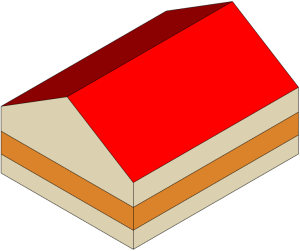
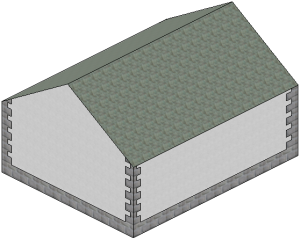
4 Wandflächen mit je 3 Fläche (1 Fläche "Orange"; 2 Flächen "Beige")(4x bldg:WallSurface) 4 Wandflächen mit je 2 Flächen (1 Fläche Textur "Putz"; 1 Fläche Textur "Sandstein") (4x bldg:WallSurface) - eine Wandfläche nicht planar ist
- eine Wandfläche verschiedene Farben oder Texturen hat
- Eine Wandfläche kann aus mehreren Flächen (SurfaceMember) bestehen wenn:
Attributes
- bldg:lod2MultiSurface
- Zeigt auf die LOD2 Geometrie
- bldg:lod3MultiSurface
- Zeigt auf die LOD3 Geometrie
- bldg:opening
- Zeigt auf ein CityGML feature bldg:Opening (bldg:Door (siehe Türen) oder bldg:Window (siehe Fenster))
Examples
|
Eine Wandfläche mit 4 Flächen (1x bldg:WallSurface) nicht empfohlen |
Vier Wandflächen mit je 1 Fläche (4x bldg:WallSurface) |
Vier Wandflächen (drei gerade Wände mit je 1 Flächen und eine gekrümmte Wand mit 12 Flächen) (4x bldg:WallSurface) |
|
Eine Wandfläche bei ellipsenförmigen oder runden Grundrissen (1x bldg:WallSurface) |
5 Wandflächen durch versetzte Fassadenteile (5x bldg:WallSurface) |
Roof Surfaces (bldg:RoofSurface)
Definition
SIG3D: Exterior, upper boundary surface of a building , building part or building installation, whose primary function is to protect from the effects of weather.
Die Normalen der Dachflächen zeigen in der Regel nach oben.
CityGML Feature
- LOD1: not available
- LOD2: bldg:RoofSurface
- LOD3: bldg:RoofSurface
Geometry
gml:MultiSurface siehe auch Handbuch - Teil 1
- Eine Dachfläche besteht nur aus den von außen sichtbaren Flächen.
- Dachüberstände, die das Gebäudevolumen nicht begrenzen, werden entsprechend den Regel für auskragende Bauelemente (Kap. 3.5) modelliert
Attributes
- bldg:lod2MultiSurface
- Zeigt auf die LOD2 Geometrie
- bldg:lod3MultiSurface
- Zeigt auf die LOD3 Geometrie
- bldg:opening
- Zeigt auf ein CityGML feature bldg:Opening (bldg:Door (siehe Türen) oder bldg:Window (siehe Fenster))
Examples
|
Satteldach |
Satteldach |
Mischform |
Zeltdach |
|
Eine Dachfläche mit 2 Flächen (1x bldg:RoofSurface) nicht empfohlen |
Zwei Dachflächen mit je 1 Fläche (2x bldg:RoofSurface) |
Drei Dachflächen (zwei ebene Dachflächen mit je 1 Flächen und eine kegelförmige Dachfläche mit 12 Flächen) (3x bldg:RoofSurface) |
Eine kegelförmigen Dachfläche mit 24 Flächen (1x bldg:RoofSurface) |
|
Krüppelwalmdach |
Mansardendach |
Bogendach |
Kuppeldach |
|
4 Dachflächen (4x bldg:RoofSurface) |
Vier Dachflächen (4x bldg:RoofSurface) |
Eine Dachflächen mit 12 Flächen (1x bldg:RoofSurface) |
Eine Dachfläche mit 264 Flächen (1x bldg:RoofSurface) |
|
Sheddach I |
Sheddach II |
||
|
5 Dachflächen (5x bldg:RoofSurface) |
10 Dachflächen (10x bldg:RoofSurface) |
Outer Floor Surfaces(bldg:OuterFloorSurface)
Definition
SIG3D: Exterior, upper boundary surface of a building , building part or building installation which is not a roof.
Die Normalen der Äußeren Bodenflächen zeigen in der Regel nach oben.
CityGML Feature
- LOD1: not available
- LOD2: bldg:OuterFloorSurface
- LOD3: bldg:OuterFloorSurface
Geometry
gml:MultiSurface siehe auch Handbuch - Teil 1
- Eine äußere Bodenfläche besteht nur aus den von außen sichtbaren Flächen.
Attributes
- bldg:lod2MultiSurface
- Zeigt auf die LOD2 Geometrie
- bldg:lod3MultiSurface
- Zeigt auf die LOD3 Geometrie
- bldg:opening
- Zeigt auf ein CityGML feature bldg:Opening (bldg:Door (siehe Türen) oder bldg:Window (siehe Fenster))
Examples
|
Dachterrasse |
Loggia |
Altan |
|
1 x OuterFloorSurface |
1 x OuterFloorSurface |
1 x OuterFloorSurface |
Outer Ceiling Surface(bldg:OuterCeilingSurface)
Definition
SIG3D: Exterior, lower boundary surface of a building , building part or building installation against air.
Die Normalen der Äußeren Deckenflächen zeigen in der Regel nach unten.
CityGML Feature
- LOD1: not available
- LOD2: bldg:OuterCeilingSurface
- LOD3: bldg:OuterCeilingSurface
Geometry
gml:MultiSurface siehe auch Handbuch - Teil 1
- Eine äußere Deckenfläche besteht nur aus den von außen sichtbaren Flächen.
Attributes
- bldg:lod2MultiSurface
- Zeigt auf die LOD2 Geometrie
- bldg:lod3MultiSurface
- Zeigt auf die LOD3 Geometrie
- bldg:opening
- Zeigt auf ein CityGML feature bldg:Opening (bldg:Door (siehe Türen) oder bldg:Window (siehe Fenster))
Examples
|
Durchfahrt |
Loggia |
Auskragendes Stockwerk |
|
1 x OuterCeilingSurface |
1 x OuterCeilingSurface |
1 x OuterCeilingSurface |
Virtual Boundary Surface (bldg:ClosureSurface)
Definition
SIG3D: Exterior or interior boundary surface providing virtual boundaries, typically used to seal holes in volumetric objects.
CityGML Feature
- LOD1: not available
- LOD2: bldg:ClosureSurface
- LOD3: bldg:ClosureSurface
Geometry
gml:MultiSurface siehe auch Handbuch - Teil 1
- Eine virtuelle Begrenzungsfläche des Gebäudes besteht nur aus den von außen sichtbaren (gedachten) Flächen.
Attributes
- bldg:lod2MultiSurface
- Zeigt auf die LOD2 Geometrie
- bldg:lod3MultiSurface
- Zeigt auf die LOD3 Geometrie
- bldg:opening nicht empfohlen
- Zeigt auf ein CityGML feature bldg:Opening (bldg:Door (siehe Türen) oder bldg:Window (siehe Fenster))
Examples
|
Offene Scheune |
Durchgangsbahnhof |
Parkhaus |
|
1 x ClosureSurface |
2 x ClosureSurface |
28 x ClosureSurface |
Doors (bldg:Door)
Definition
ISO 6707-1: Construction for closing an opening intended primarily for access or egress or both.
CityGML Feature
- LOD1: not available
- LOD2: not available
- LOD3: bldg:Door
Geometry
gml:MultiSurface siehe auch Handbuch - Teil 1
- Türen können nur aus den von außen sichtbaren Flächen (Fall A, B und C) oder als räumliche Objekte (Fall D) modelliert werden.
|
Fall A (eine einfache Fläche) |
Fall B (eine einfache Fläche mit Textur) |
Fall C (nur von außen sichtbare Flächen der detaillierten Tür) |
Fall D (Tür als räumliches Objekt) |
- Um eine geschlossen Außenhülle des Gebäudes zu gewährleisten, sollten Türen nicht im geöffneten Zustand (Fall A) sondern im geschlossenen Zustand (Fall B) modelliert werden.
|
Fall A (Türen geöffnet) |
Fall B (Türen geschlossen) |
Attributes
- bldg:lod3MultiSurface
- Zeigt auf die LOD3 Geometrie
- bldg:address
- Zeigt auf eine Adresse
Examples
|
Simple Doors |
Simple Doors with Embrasure |
Detailled Doors |
|
Number of Polygons (Complete Model) = 19 |
Number of Polygons (Complete Model) = 128 |
Number of Polygons (Complete Model) = 3498 |
Windows (bldg:Window)
Definition
SIG3D: Construction for closing an opening in a wall or roof, primarily intended to admit light and / or provide ventilation (cf. ISO 6707).
CityGML Feature
- LOD1: not available
- LOD2: not available
- LOD3: bldg:Window
Geometry
gml:MultiSurface siehe auch Handbuch - Teil 1
- Fenster können nur aus den von außen sichtbaren Flächen (Fall A, B und C) oder als räumliche Objekte (Fall D) modelliert werden.
|
Fall A (eine einfache Fläche) |
Fall B (eine einfache Fläche mit Textur) |
Fall C (nur von außen sichtbare Flächen des detaillierten Fensters) |
Fall D (Tür als räumliches Objekt) |
- Um eine geschlossen Außenhülle des Gebäudes zu gewährleisten, sollten Fenster nicht im geöffneten Zustand (Fall A) sondern im geschlossenen Zustand (Fall B) modelliert werden.
|
Fall A (Fenster geöffnet) |
Fall B (Fenster geschlossen) |
Attributes
- bldg:lod3MultiSurface
- Zeigt auf die LOD3 Geometrie
Examples
|
Simple Window |
Simple Window with Embrasure |
Detailled Window |
|
Number of Polygons (Complete Model) = 28 |
Number of Polygons (Complete Model) = 412 |
Number of Polygons (Complete Model) = 6269 |
Extended Modeling
The Extended Modeling covers the modeling of frequently appearing architectural building components which significantly form the building's outer appearence. These building components are modeled as building installations as a general rule.
Balconies
Definition
SIG3D: A Balcony is a platform attached to a building which lies above the terrain level and projects from the building structure. It is supported by columns or console brackets, and enclosed with a balustrade [cit. en. Wikipedia]. The word's origin lies in the Italian word "balcone", which itself originates from the old-high-german word "balcho".
CityGML Feature
- LOD1: not available
- LOD2: bldg:BuildingInstallation
- LOD3: bldg:BuildingInstallation
Geometry
- gml:Geometry recommended
- Threshold LOD2:
- Modeling only, if the balcony's depth >= 0,5 m;
- Plane ground-area, if the component's thickness <= 0,5 m;
- Plane side-walls, if the component's thickness <= 0,5 m;
- Modeling only, if the balcony's depth >= 0,5 m;
- Threshold LOD3:
- Modeling only, if the balcony's depth >= 0,2 m;
- Plane ground-Area, if the component's thickness <= 0,2 m;
- Plane side-walls, if the component's thickness <= 0,2 m;
- Modeling only, if the balcony's depth >= 0,2 m;
- Modeling principle
- The building contains all geometry-containing border surfaces.
- The balcony is modeled as a Building Installation with Geometry. That is without semantic differentiation.
- The building's volume references (Xlink) to the corresponding boarder surfaces.
- Threshold LOD2:
| Modeling principle of a balcony |
- bldg:boundedBy not recommended
Attributes
- bldg:function
- Balcony (1000); see SIG 3D Codelistrecommendation for bldg:BuildingInstallation --> function
- bldg:boundedBy
- not recommended: A Balcony is considered as one building component which is semantically not subdivided any further.
Examples
|
Balconies |
|||||
|
Real Building |
ALKIS (German Cadastral Data) |
CityGML LOD0 |
CityGML LOD1 |
CityGML LOD2 |
CityGML LOD3 |
|
Above terrain level, projected from the building structure --> Balcony |
|||||
|
Above terrain level, partly projected from the building structure, not bounded by 3 walls --> Balcony (no Loggia) |
|||||
Loggias
Definition
SIG3D: A Loggia is an enclosed on top exterior room within the building footprint, which is surrounded by 3 walls at full storey height. From an architectonical point of view, a Loggia (from the Italian) is a room within a building, which opens to the exterior area by means of archs or other constructional appliances. At ground floor level, Loggias create a passage between the interior area and the exterior area. At upper floor levels, Loggias are used as connection passages or as outdoor seating.
CityGML Feature
- LOD1: not available
- LOD2: bldg:BuildingInstallation
- LOD3: bldg:BuildingInstallation
Geometry
- gml:Geometry not recommended
- bldg:boundedBy recommended
- Threshold LOD2:
- Modeling only, if the Loggia's depth >= 0,5 m;
- Threshold LOD3:
- Modeling only, if the Loggia's depth >= 0,2 m;
- Modeling Principle
- The building contains all geometry-containing boarder surfaces
- Threshold LOD2:
- The Loggia (BuildingInstallation) references (Xlink) to the building's corresponding boarder surfaces. If the Loggia's floor is not part of the exterior building structure, it will be modeled as a geometry-containing boarder surface at the Building Installation (? deutsch: ...wird sie als Begrenzungsfläche mit Geometrie am BuildingInstallation modelliert).
- The building's volume references (Xlink) to the building's corresponding boarder surfaces.
| Modeling Principle of a Loggia |
Attribute
- bldg:function
- Loggia (1001); see SIG 3D Codelist recommendation for bldg:BuildingInstallation --> function
- bldg:boundedBy
- recommended: A Loggia is considered as a building component which semantically consists of the building's boarder surfaces and possibly an exterior floor surface.
Eine Loggia wird als ein Bauteil angesehen, das sich semantisch aus Begrenzungsflächen des Gebäudes und evtl. einer äußeren Bodenflächen zusammensetzt.
Examples
|
Loggien |
|||||
|
Real Building |
ALKIS (German Cadastral Data) |
CityGML LOD0 |
CityGML LOD1 |
CityGML LOD2 |
CityGML LOD3 |
|
|
|||||
|
200px Loggien über halbe Frontbreite (Reihenhaus) |
[[image:|200px]] |
[[image:|200px]] Kamen Am Langen Kamp 25 |
|||
|
200px Vorgebaute Loggien |
|||||
* Die Geometrie ist bei diesem Beispiel innerhalb des lod2Solid modelliert, nicht in den jeweiligen BoundarySurface Elementen (Widerspruch zum Standard)!
Thoroughfare
Definition
SIG3D: offene Durchfahrt ist eine Stelle, an der mit Fahrzeugen durch Gebäude ebenerdig gefahren werden kann und die durch Wände und eine Decke begrenzt ist.
CityGML Feature
- LOD1: not available
- LOD2: bldg:BuildingInstallation
- LOD3: bldg:BuildingInstallation
Geometry
- gml:Geometry nicht empfohlen
- bldg:boundedBy empfohlen
- Schwellenwerte LOD2 / LOD3:
- Modellierung nur, wenn Breite und Höhe der Durchfahrt >= 2 m;
- Modellierungsprinzip (Durchfahrt in einem Gebäude)
- Das Gebäude enthält alle Begrenzungsflächen mit Geometrie
- Die Durchfahrt (BuildingInstallation) referenziert (Xlink) auf die entsprechenden Begrenzungsflächen des Gebäudes.
- Das Gebäudevolumen referenziert (Xlink) auf die entsprechenden Begrenzungsflächen des Gebäudes

Modellierungsprinzip einer Durchfahrt
- Modellierungsprinzip (Gemeinsame Durchfahrt durch zwei Gebäude)
- Die Gebäude enthalten jeweils alle Begrenzungsflächen mit Geometrie
- Die Durchfahrt (BuildingInstallation) wird dem Gebäude mit dem größeren Anteil der Durchgangsbreite zugeordnet. Die Durchfahrt referenziert (Xlink) auf die entsprechenden Begrenzungsflächen des Gebäudes und komplettiert die Durchfahrt mit Begrenzungsgeometrie an der BuildingInstallation.
- Die Gebäudevolumen referenzieren (Xlink) auf die entsprechenden Begrenzungsflächen der jeweiligen Gebäude
Modellierungsprinzip einer gemeinsamen Durchfahrt
Anmerkung: Die Modellierung von Gebäuden in geschlossener Bauweise wird in Kapitel 3.7 beschriebenAttributes
- bldg:function
- Durchfahrt (1002); siehe SIG 3D Codelistenvorschlag für bldg:BuildingInstallation --> function
- bldg:boundedBy
- empfohlen: Eine Durchfahrt wird als ein Bauteil angesehen, das sich semantisch aus Begrenzungsflächen des Gebäudes und evtl. einer äußeren Bodenflächen zusammensetzt.
Examples
Durchfahrten
Reales Beispiel
ALKIS
CityGML LOD0
CityGML LOD1
CityGML LOD2
CityGML LOD3
200px Zwei Gebäude mit gemeinsamer Durchfahrt
Zwei Gebäude mit getrennten Durchfahrten
Zwei versetzt stehende Gebäude mit getrennten Durchfahrten
200px Zwei Gebäude mit einseitiger Durchfahrt
200px Zwei Gebäude mit Verbindungstrakt
Dormers / Zwerchhaus (Zwerchgiebel)
Definition
SIG3D: Eine Dachgaube, kurz Gaube, vereinzelt auch Dachgaupe bzw. Gaupe, ist ein Dachaufbau im geneigten Dach eines Gebäudes. Die Dachgaube dient zur Belichtung und Belüftung der Dachräume. Zu diesem Zweck befinden sich in den Gauben von Wohngebäuden im Allgemeinen Fenster. Gleichzeitig vergrößert eine Gaube den nutzbaren Raum im Dachgeschoss [Wikipedia].
Eine Dachgaube steht nicht in einer Ebene mit einer Außenwand des Gebäudes. Die Dachgaube (bzw. dessen Grundriss) hat einen Mindestversatz von 0,5 m und liegt innerhalb des Gebäudegrundrisses.
SIG3D: Das Zwerchhaus ist ein ein- oder mehrgeschossiger Aufbau eines geneigten Daches. Es hat einen Giebel und ein eigenes Dach. Der Zwerchgiebel steht in der Flucht der Gebäudeaußenwand. Dadurch unterscheidet sich das Zwerchhaus von der Gaube, die unabhängig von den Außenwänden auf dem Dach positioniert ist. Das Dach des Zwerchhauses ist häufig als Satteldach ausgebildet. Dessen First verläuft quer (zwerch) zum Dachfirst des Hauptdachs. Entsprechend stehen die Traufen von Zwerchdach und Hauptdach rechtwinklig zueinander [Wikipedia].
Anmerkung: Das Zwerchhaus wird nicht als Gebäudeinstallation modelliert sondern als Begrenzungsflächen am Gebäude selbst.
CityGML Feature
- LOD1: not available
- LOD2: bldg:BuildingInstallation
- LOD3: bldg:BuildingInstallation
Geometry
- gml:Geometry nicht empfohlen
- bldg:boundedBy empfohlen
- Schwellenwerte LOD2:
- Modellierung nur, wenn Breite und Höhe der Dachgaube >= 2 m;
- Schwellenwerte LOD3:
- Modellierungsprinzip
- Das Gebäude enthält alle Begrenzungsflächen mit Geometrie des Gebäudekörpers. Um das Volumen zu schließen wird eine ClosureSurface in die Dachlücke modelliert.
- Die Dachgaube (BuildingInstallation) enthält alle Begrenzungsflächen mit Geometrie der Dachgaube. Um das Volumen zu schließen wird eine ClosureSurface modelliert oder auf die entsprechende ClosureSurface des Gebäudekörpers referenziert (Xlink mit OrientableSurface).
- Das Gebäudevolumen, Volumen des Gebäudekörpers und Volumen der Dachgaube (CompositeSolid), referenziert (Xlink) auf die entsprechenden Begrenzungsflächen des Gebäudekörpers und der Dachgaube.
- Schwellenwerte LOD2:
Modellierungsprinzip einer Dachgaube Attributes
- bldg:function
- Dachgaube (1003); siehe SIG 3D Codelistenvorschlag für bldg:BuildingInstallation --> function
- bldg:boundedBy
- empfohlen: Eine Dachgaube wird als ein Bauteil angesehen, das sich semantisch aus Begrenzungsflächen des Gebäudes zusammensetzt.
Examples
Dachgaube
Reales Beispiel
ALKIS
CityGML LOD0
CityGML LOD1
CityGML LOD2
CityGML LOD3
Zwerchhaus (Zwerchgiebel)
Reales Beispiel
ALKIS
CityGML LOD0
CityGML LOD1
CityGML LOD2
CityGML LOD3
Arcades / Architrav
Definition
SIG3D: Eine Arkade (lateinisch arcus: Bogen) bezeichnet in der Architektur einen von Pfeilern oder Säulen getragenen Bogen. Der Bogen lässt wesentlich größere Spannweiten zu als dies beim Architrav möglich ist [Wikipedia].
SIG3D: Der Architrav (von italienisch architrave, aus griechisch ἀρχι, archi-, Ober-, Haupt- und lateinisch trabs, Balken) ist ein auf einer Stützenreihe ruhender Horizontalbalken. In der Antike wurde der Architrav auch Epistyl genannt, da er hier meist auf Säulen ruht (Epistyl von griechisch auf den Säulen liegend)[Wikipedia].
CityGML Feature
- LOD1: not available
- LOD2: bldg:BuildingInstallation
- LOD3: bldg:BuildingInstallation
Geometry
- gml:Geometry nicht empfohlen
- bldg:boundedBy empfohlen
- Schwellenwerte LOD2:
- Schwellenwerte für Modellierung von Stützen: alle Seiten der BoundingBox der Stütze >= 0,5 m
- Modellierungsprinzip
- Das Gebäude enthält alle Begrenzungsflächen mit Geometrie
- Die Arkade (BuildingInstallation) referenziert (Xlink) auf die entsprechenden Begrenzungsflächen des Gebäudes.
- Das Gebäudevolumen referenziert (Xlink) auf die entsprechenden Begrenzungsflächen des Gebäudes
- Schwellenwerte LOD2:
Modellierungsprinzip einer Arkade Attributes
- bldg:function
- Arkade (1009); siehe SIG 3D Codelistenvorschlag für bldg:BuildingInstallation --> function
- bldg:boundedBy
- empfohlen: Eine Arkade wird als ein Bauteil angesehen, das sich semantisch aus Begrenzungsflächen des Gebäudes und evtl. einer äußeren Bodenflächen zusammensetzt.
Examples
Arkaden
Reales Beispiel
ALKIS
CityGML LOD0
CityGML LOD1
CityGML LOD2
CityGML LOD3
Arkade
Real Building
CityGML LOD0
CityGML LOD1
CityGML LOD2
CityGML LOD3
- Schwellenwerte LOD2 / LOD3:


